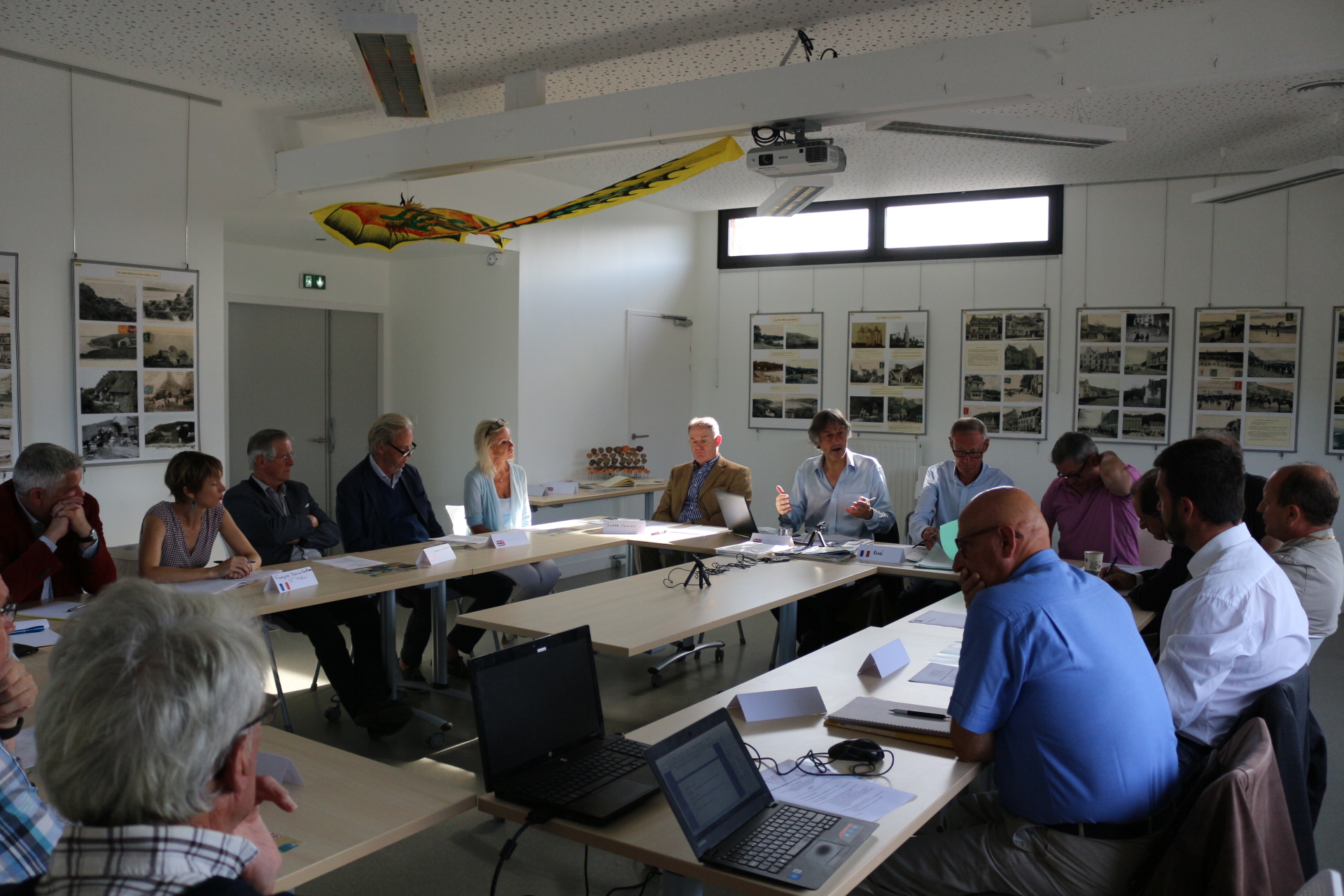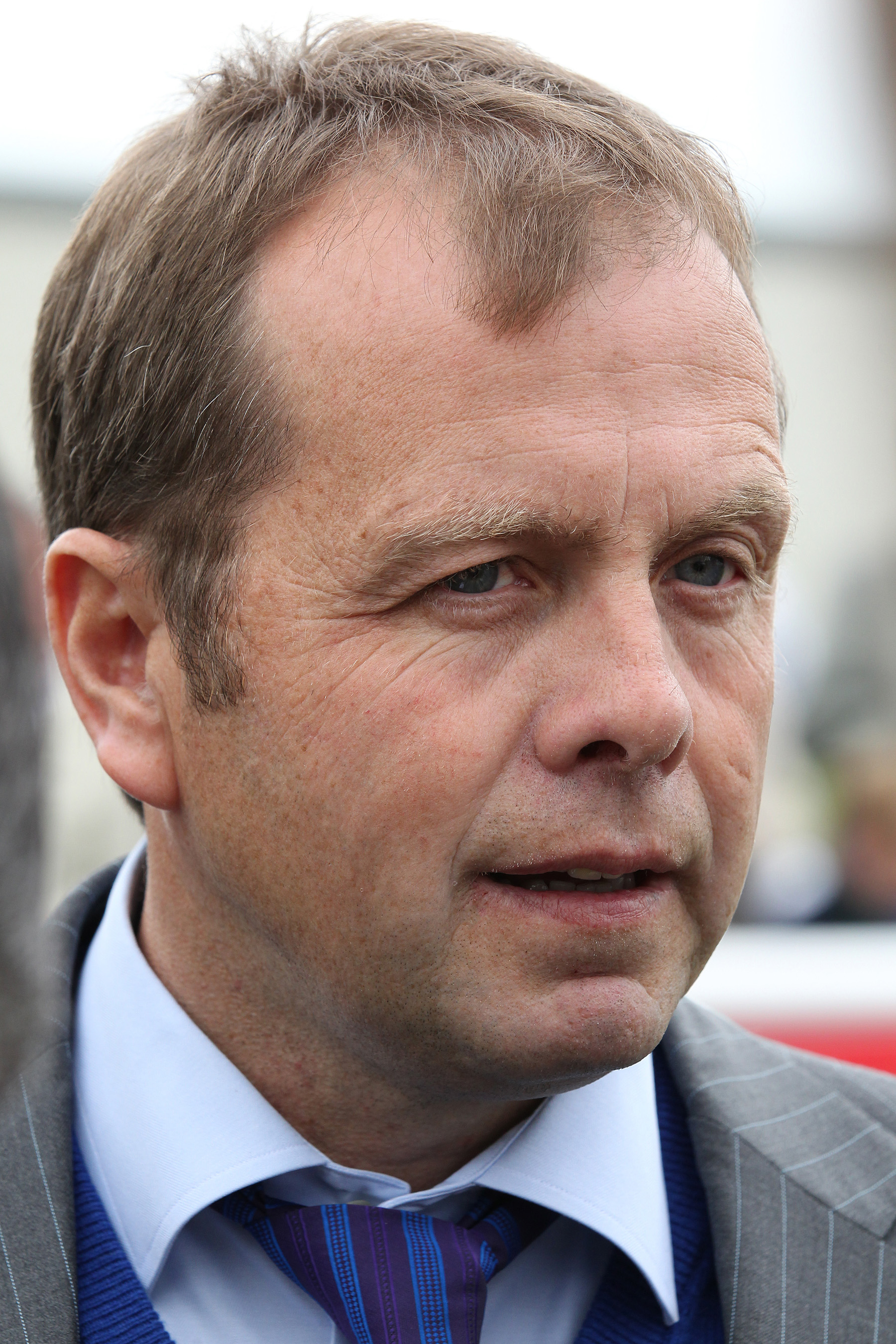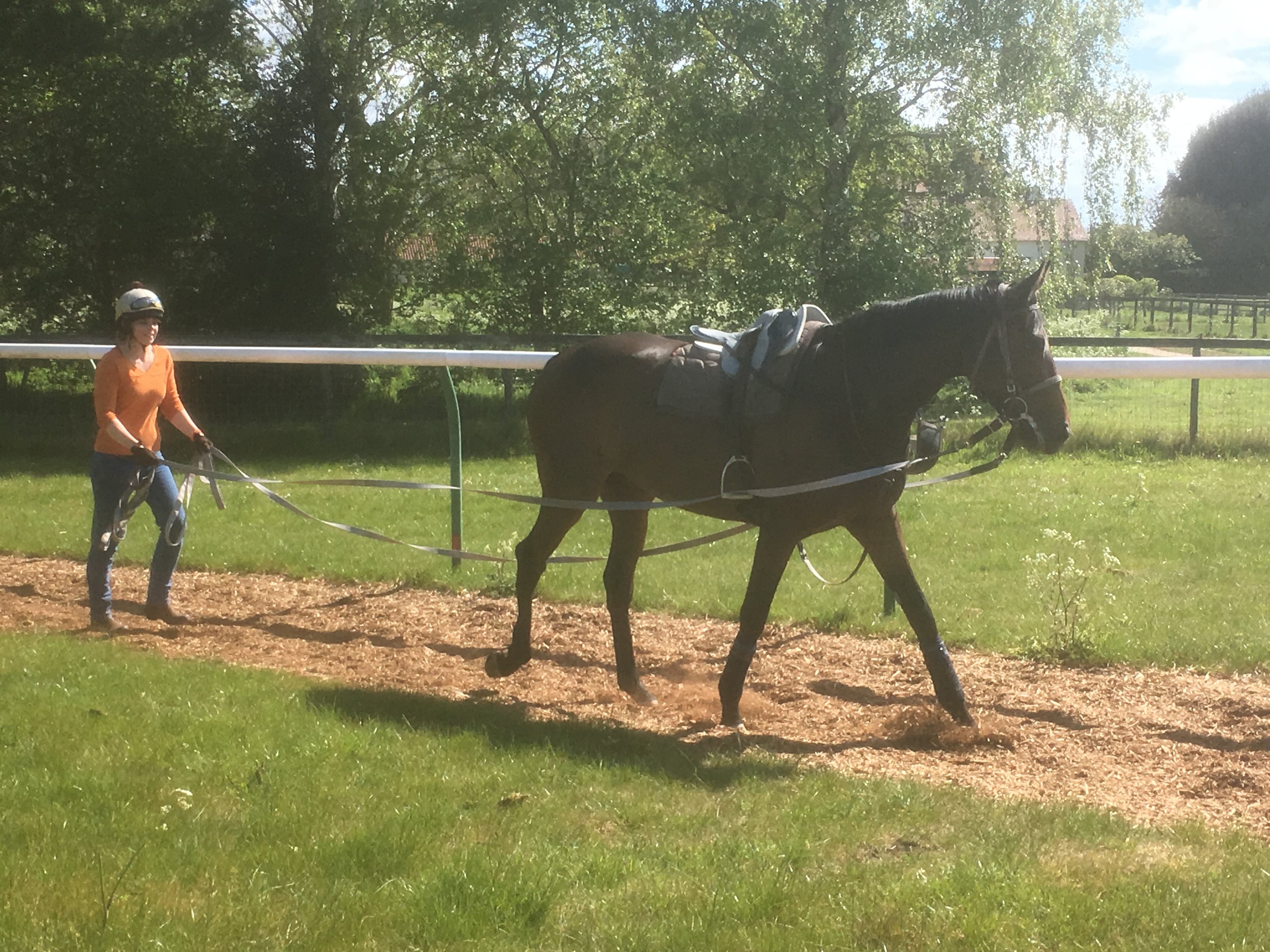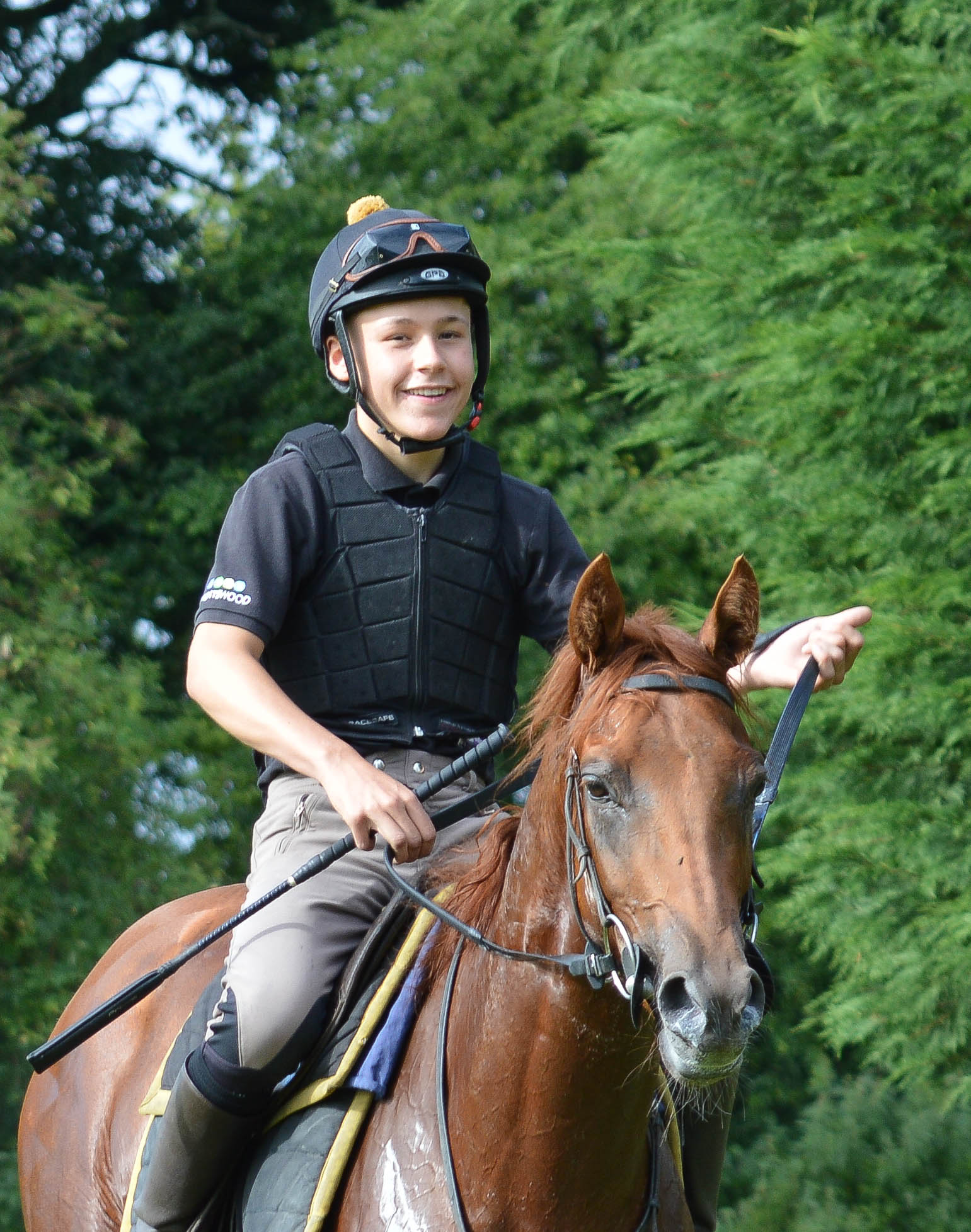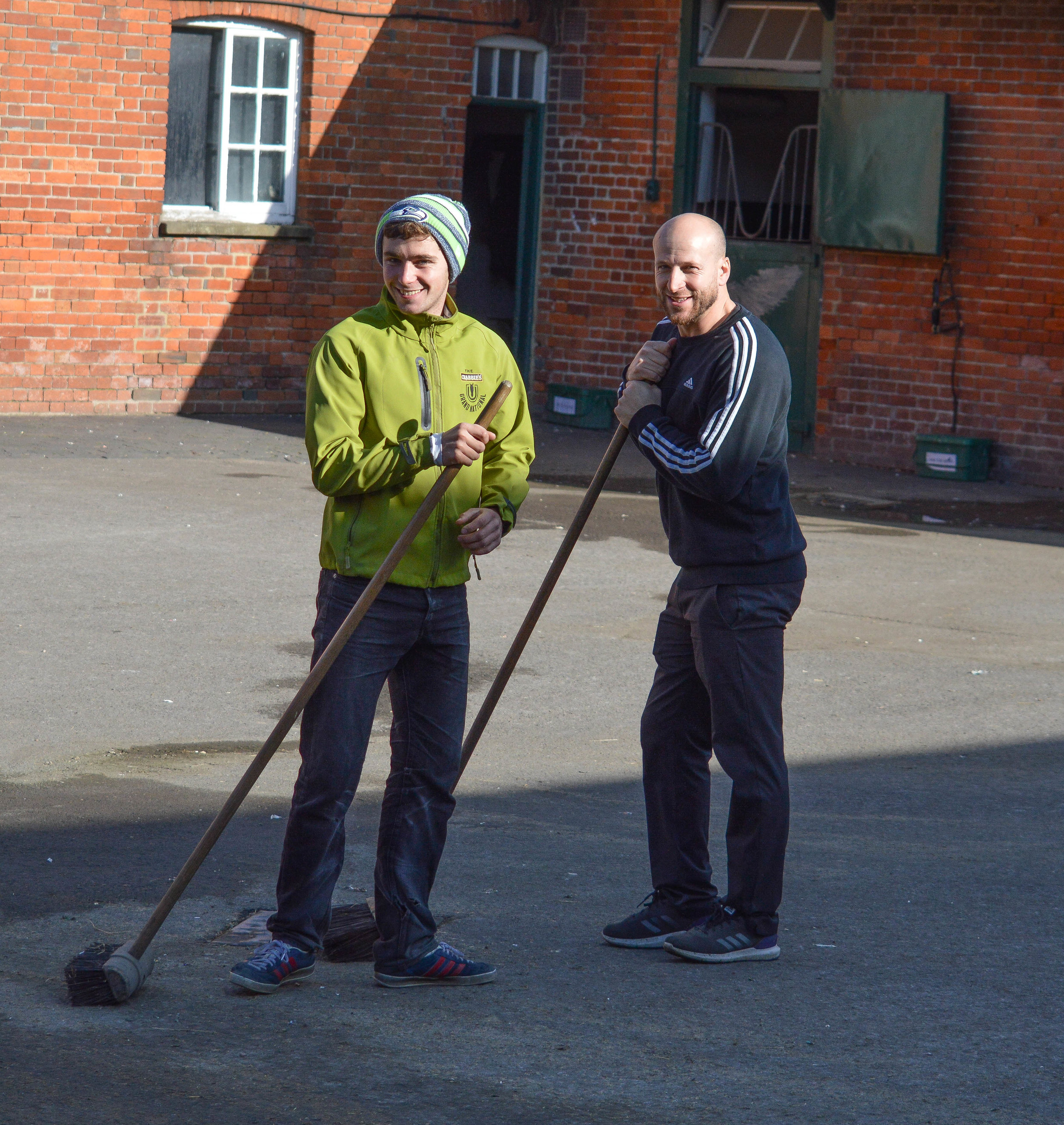Trainer Profile: Colin Tizzard
“He’ll win the King George, two years’ time, you wait and see!” Given that the speaker is Colin Tizzard, who has saddled the last two winners of the Grade 1 chase, the opinion carries weight, but a warm chuckle from him downplays the gravity of his statement.
Tizzard, his son Joe, and a group of owners are in jovial mood as they watch a pair of promising young novices school upsides at the trainer’s Venn Farm Stables in Dorset, south-west England.
Home to some of the most successful trainers, past and present, in National Hunt (Jumps) racing, the region has long been a hotbed for the sport and also for Point-to-Point (PTP) racing, a related category of amateur thoroughbred racing over fences which is often a starting point in the careers of National Hunt jockeys, trainers, and horses.
Tizzard is one of a number of trainers in the area who have a background in Point-to-Points and have made a successful transition to racing under Rules. His team has firmly established itself as one of the top 20 National Hunt stables in the country season in and season out, having started with two pointers to support his son’s embryonic riding career more than two decades ago, while also running the family dairy farming business.
The stable’s run of form has notably progressed from very good to excellent in the past three years. Last season was Tizzard’s best to date, when he finished third in the trainers’ championship to the two trainers who have dominated the British National Hunt scene for the past decade or so, Nicky Henderson and Paul Nicholls.
So what has propelled Colin Tizzard to the highest echelons of the trainers’ table?
To read more - subscribe now!
Buy this issue online here
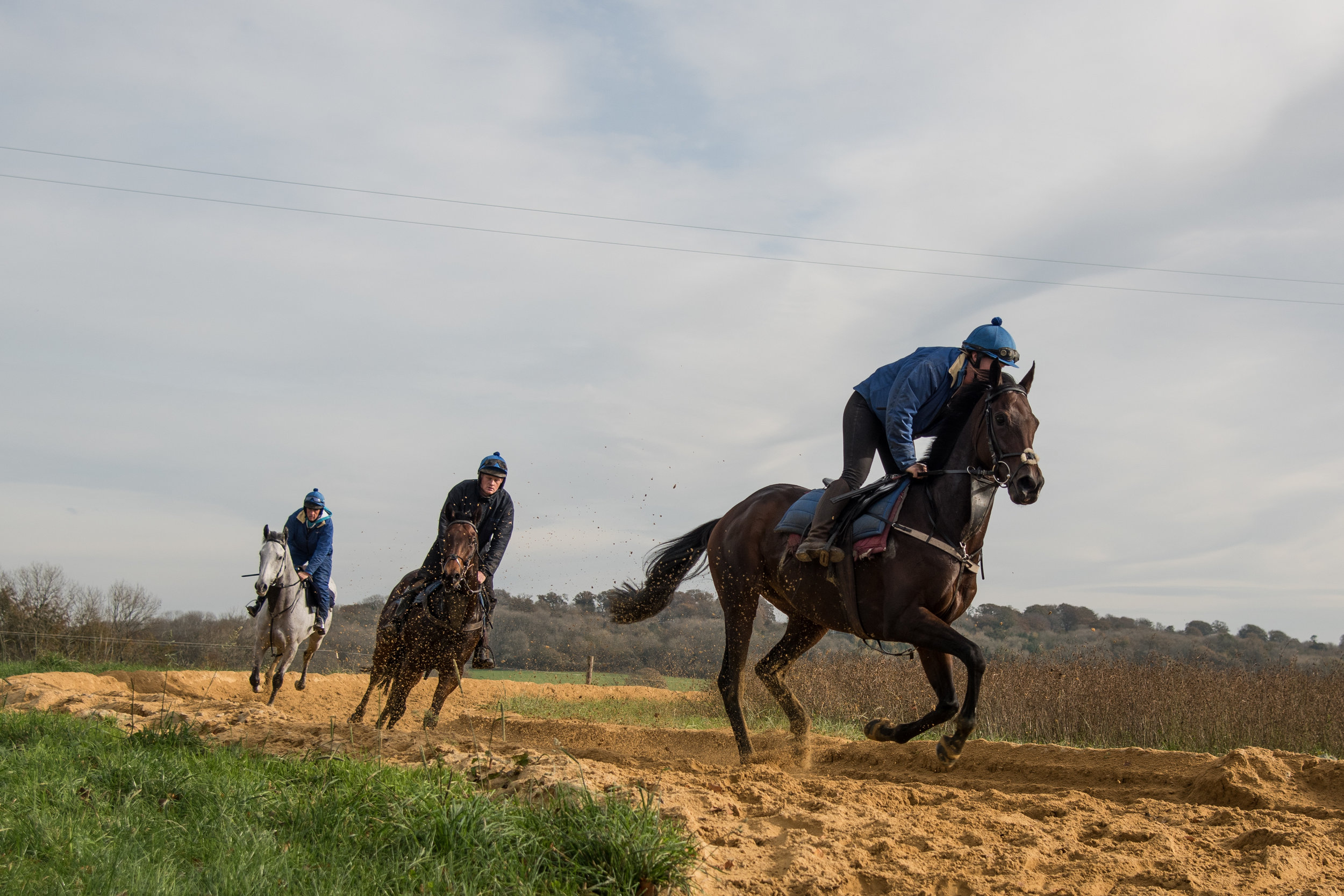
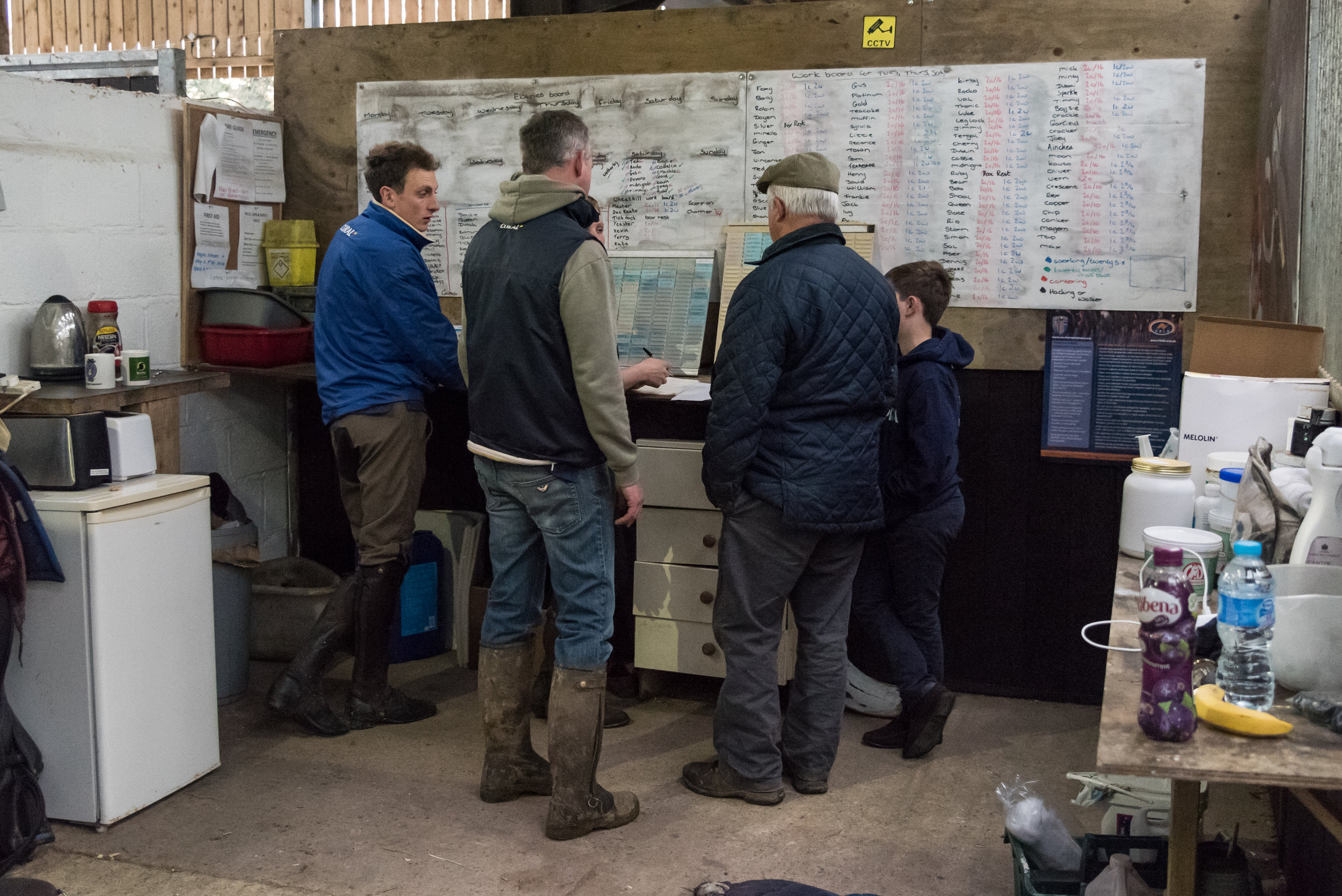
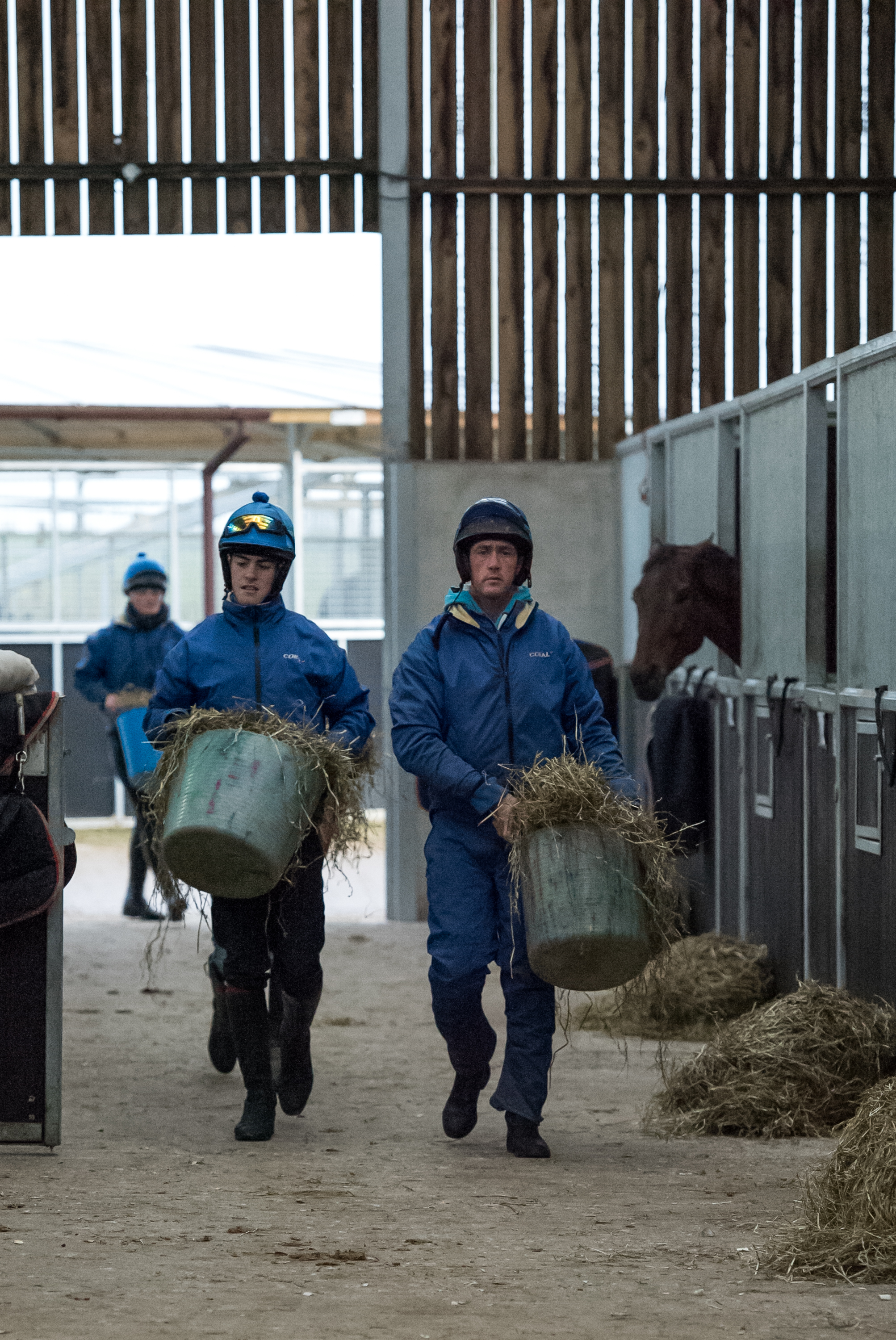
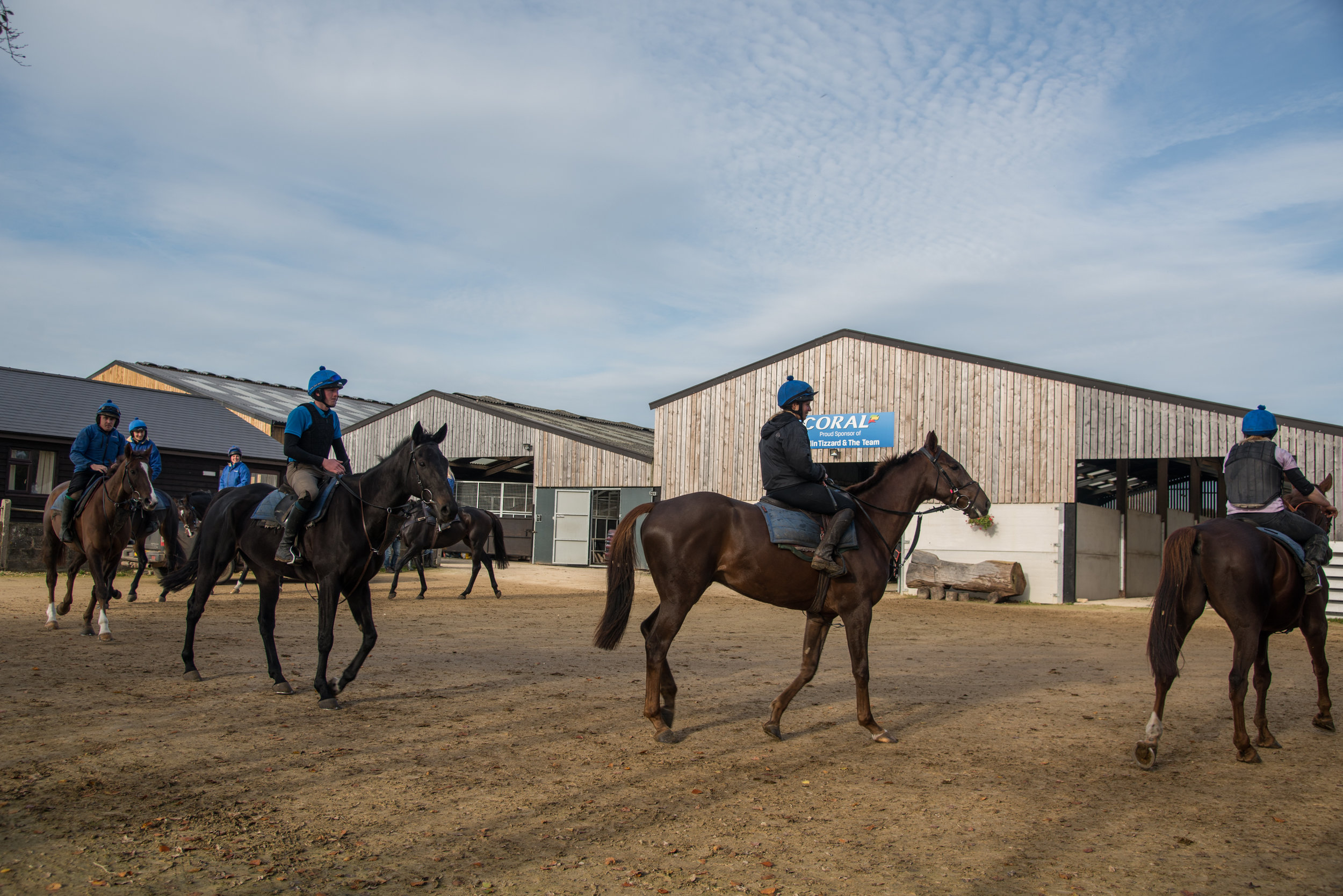
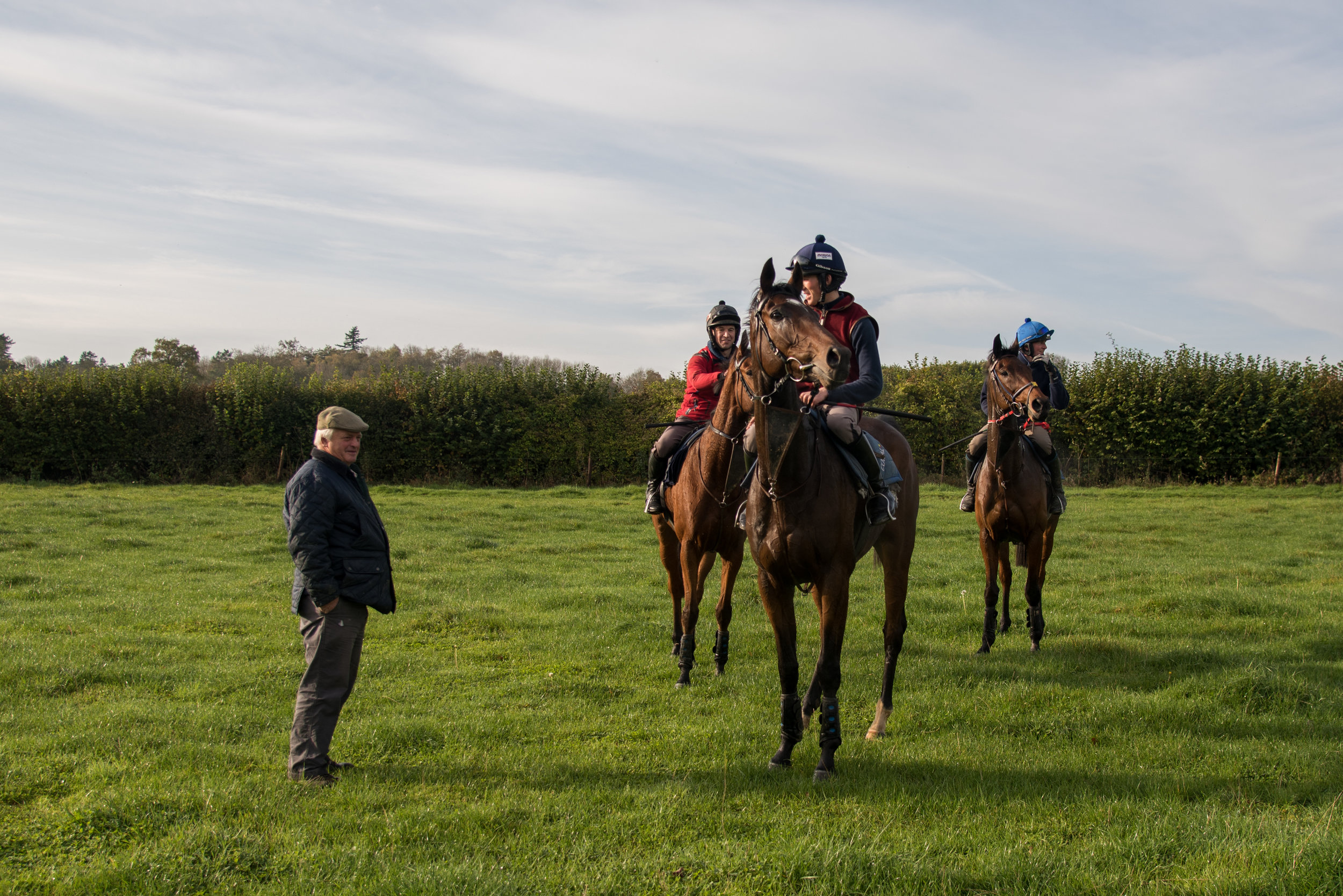
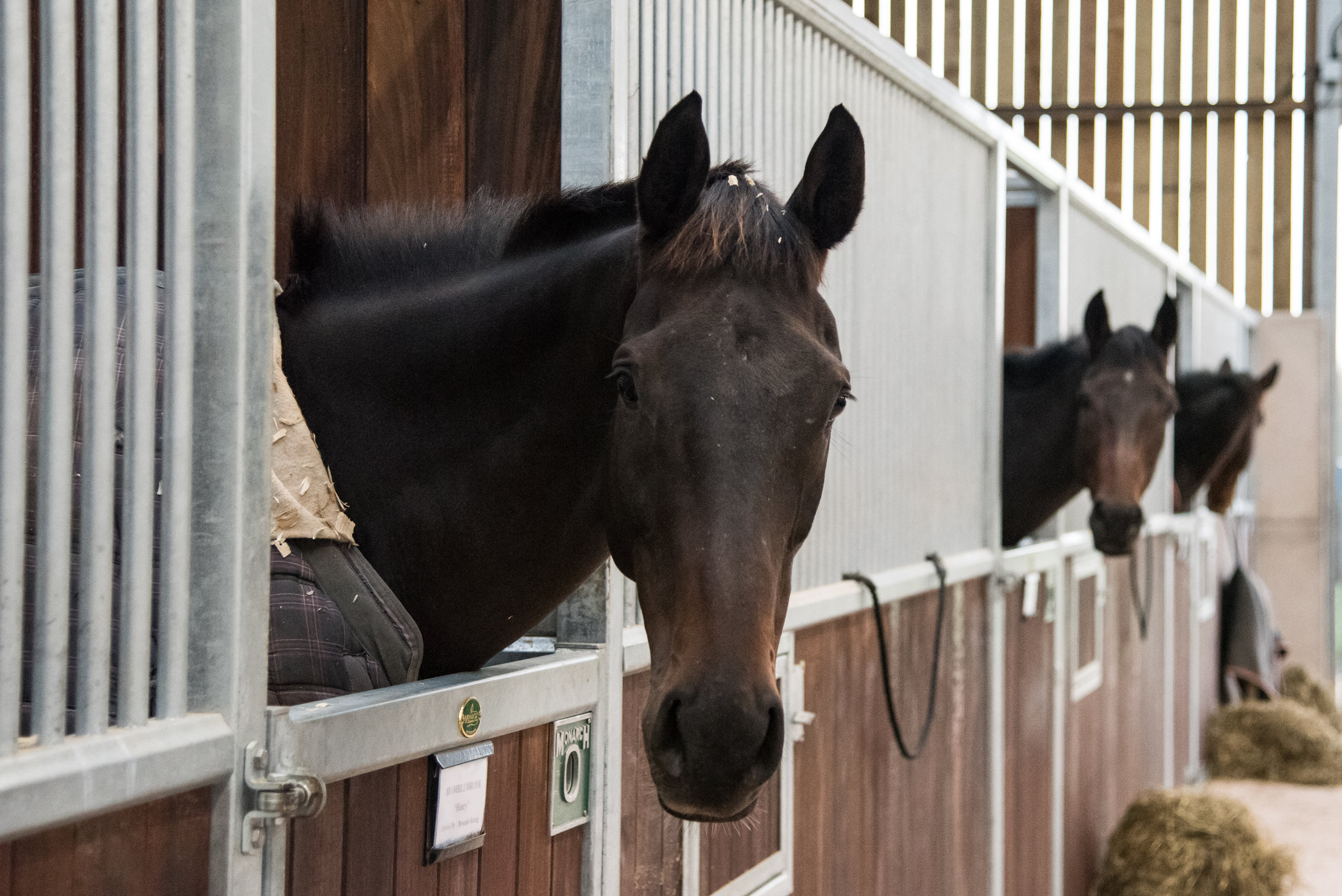
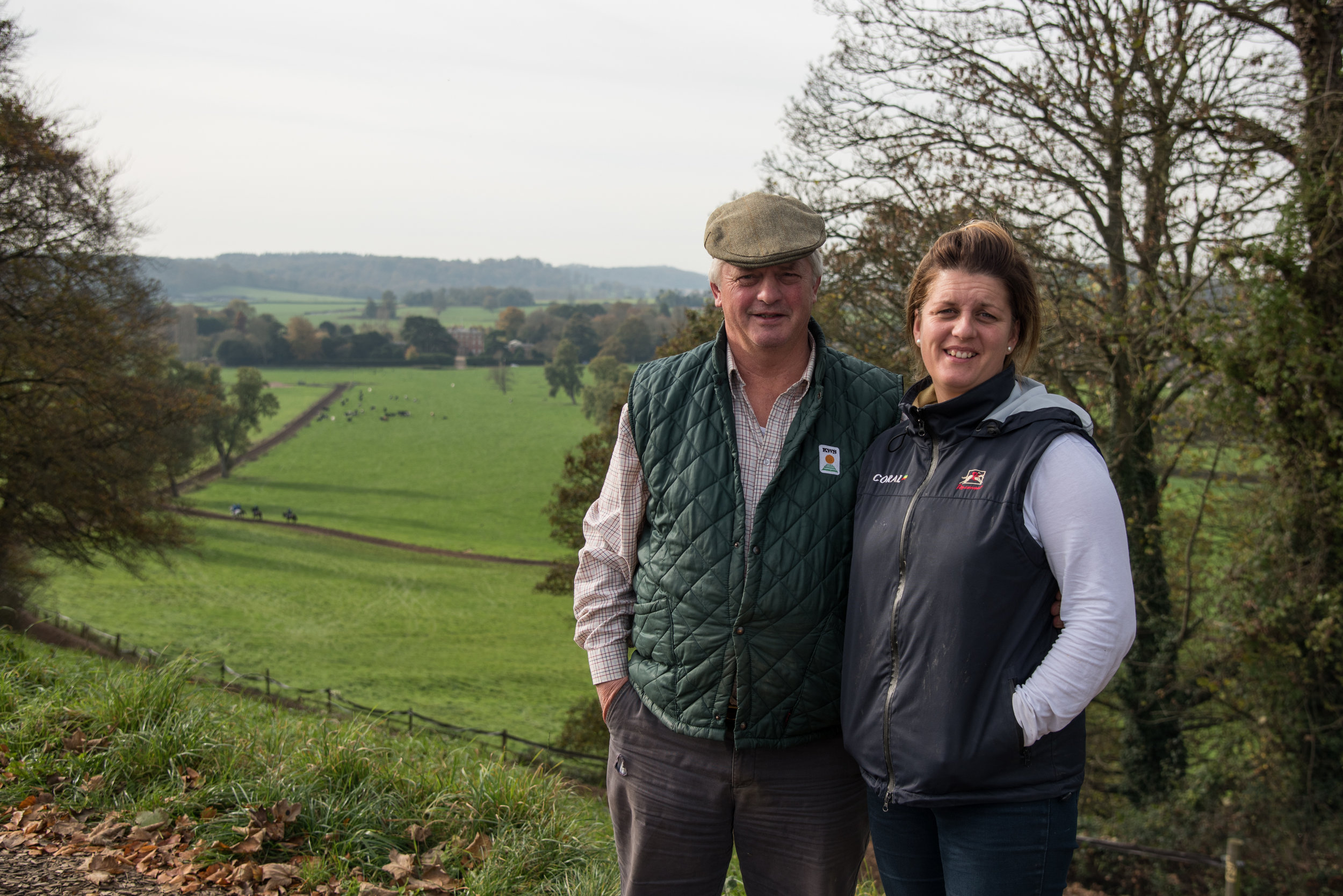
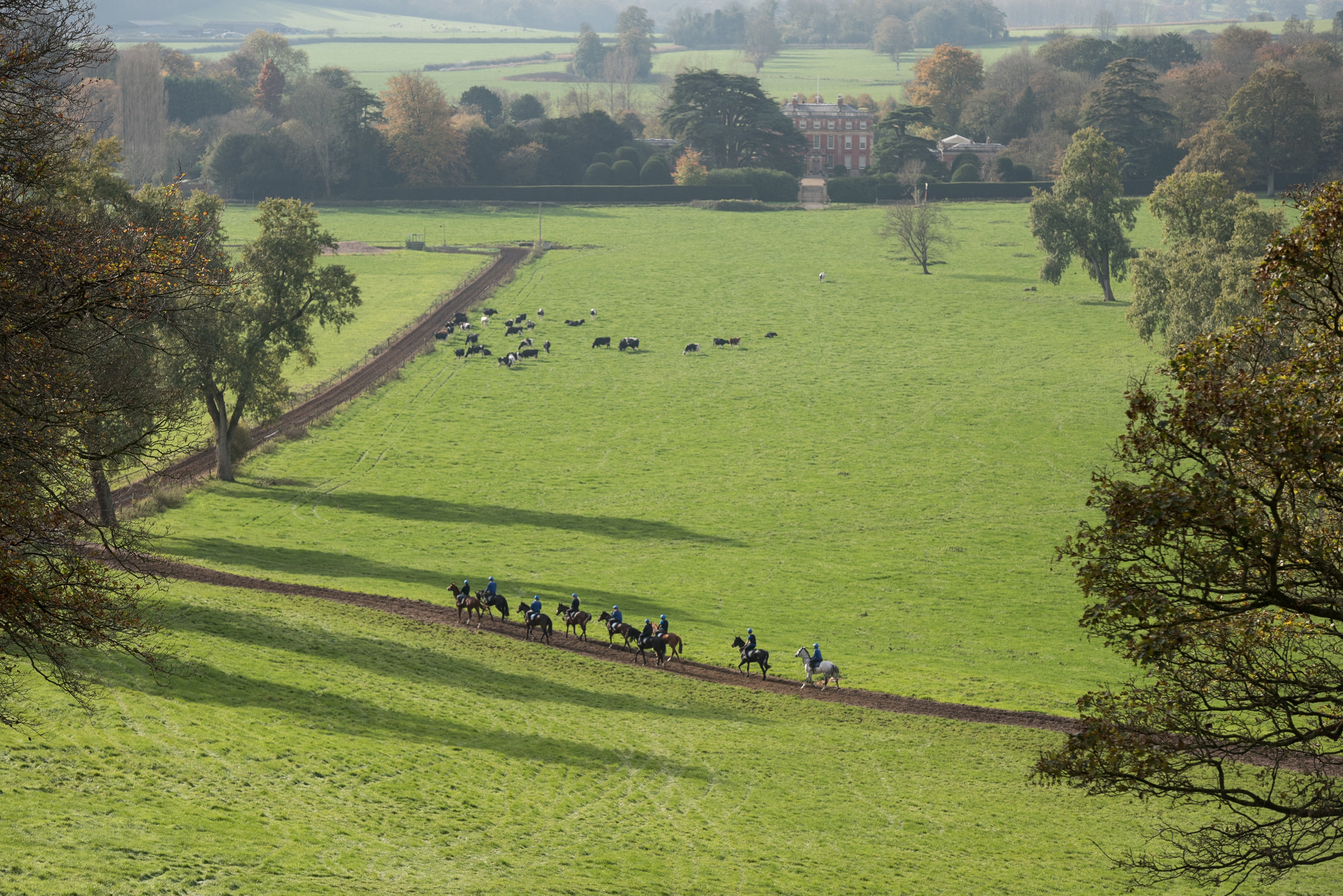
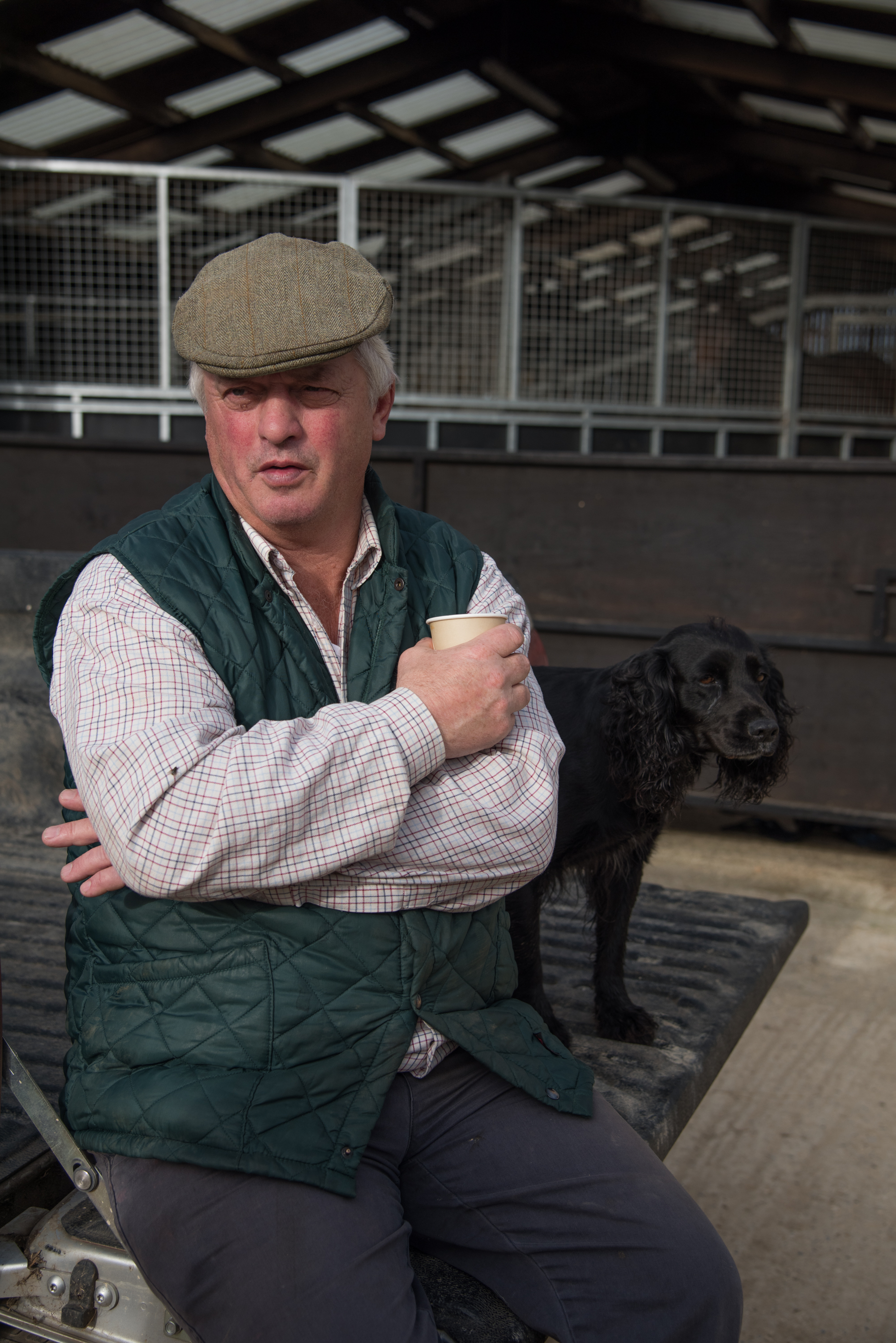

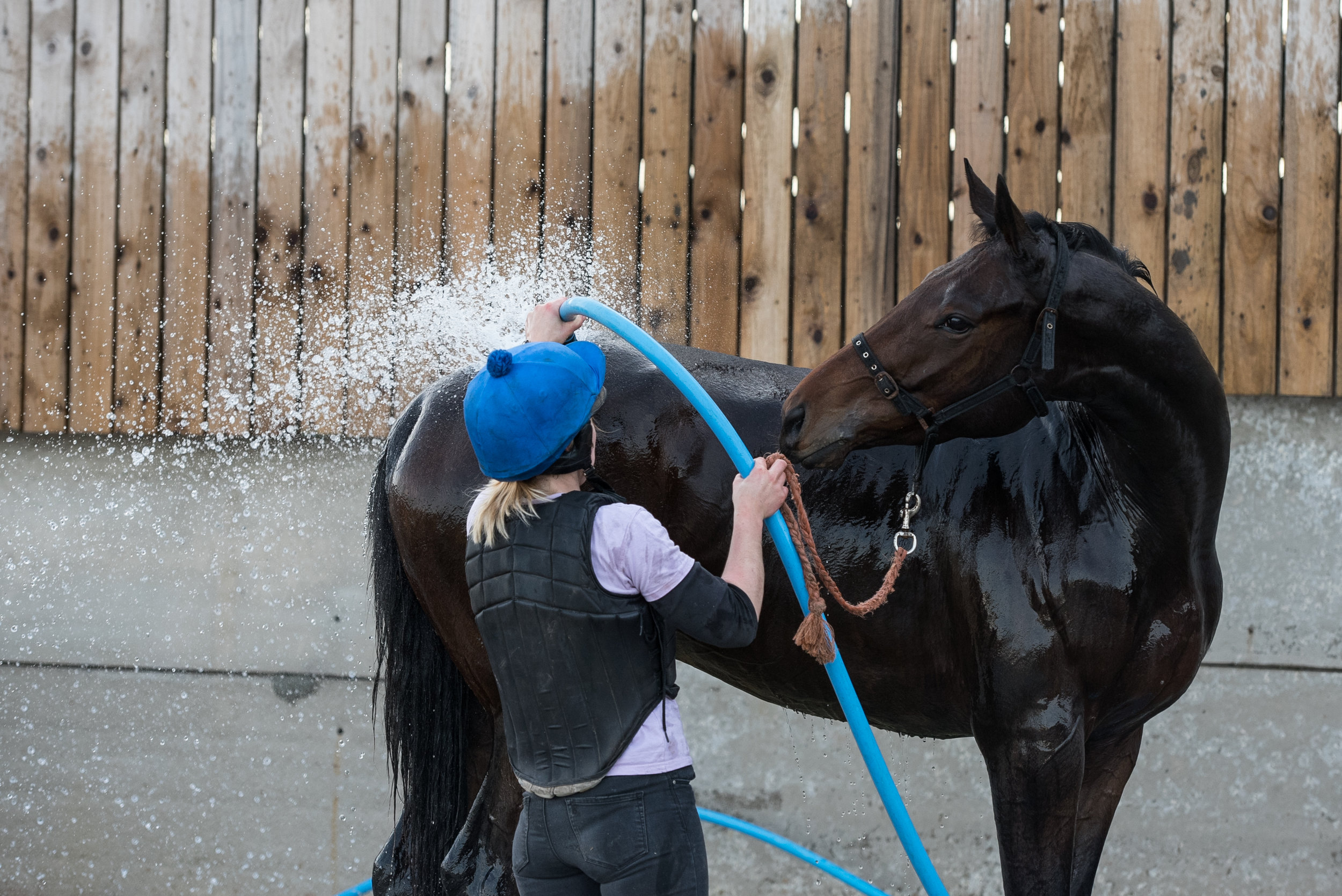
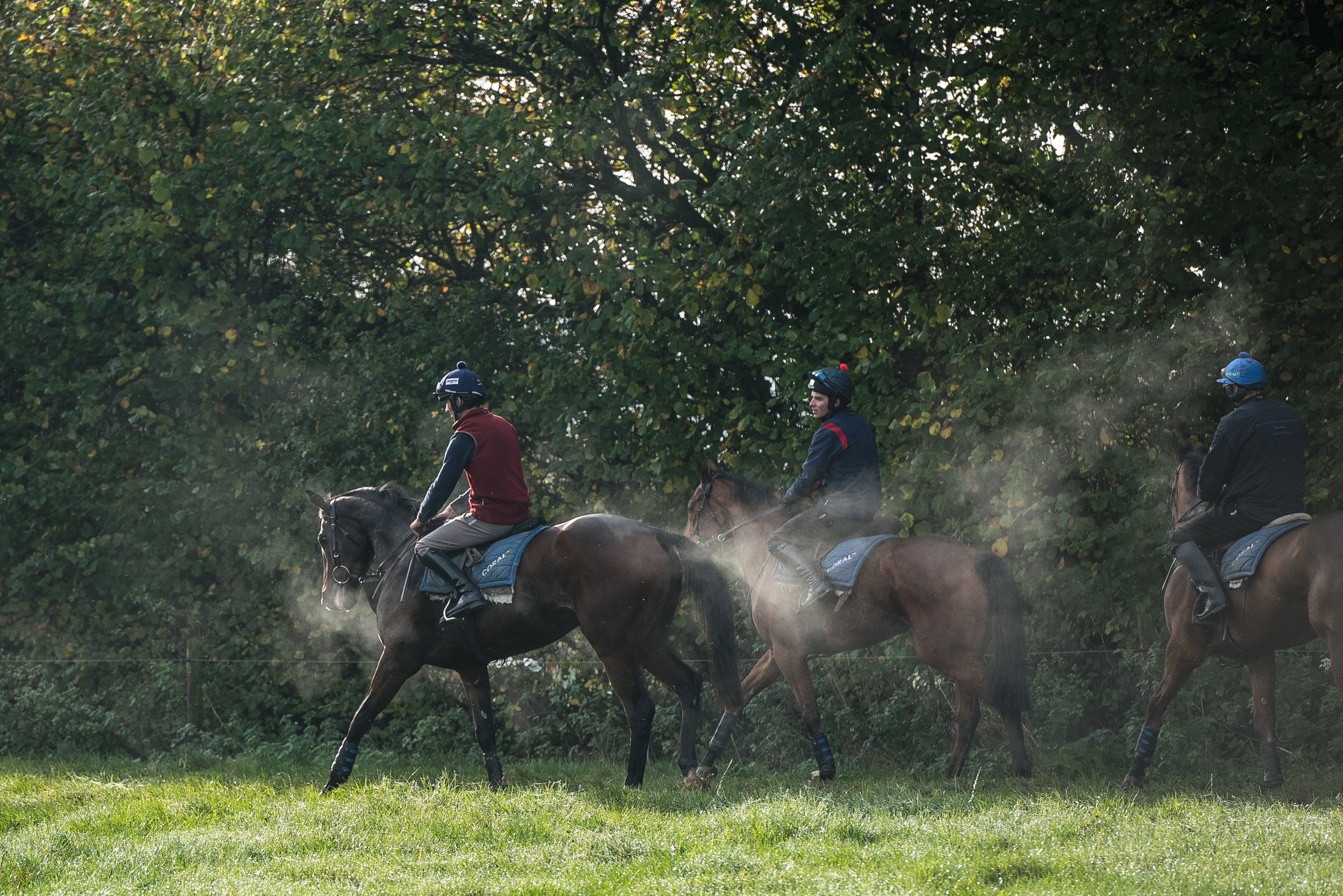
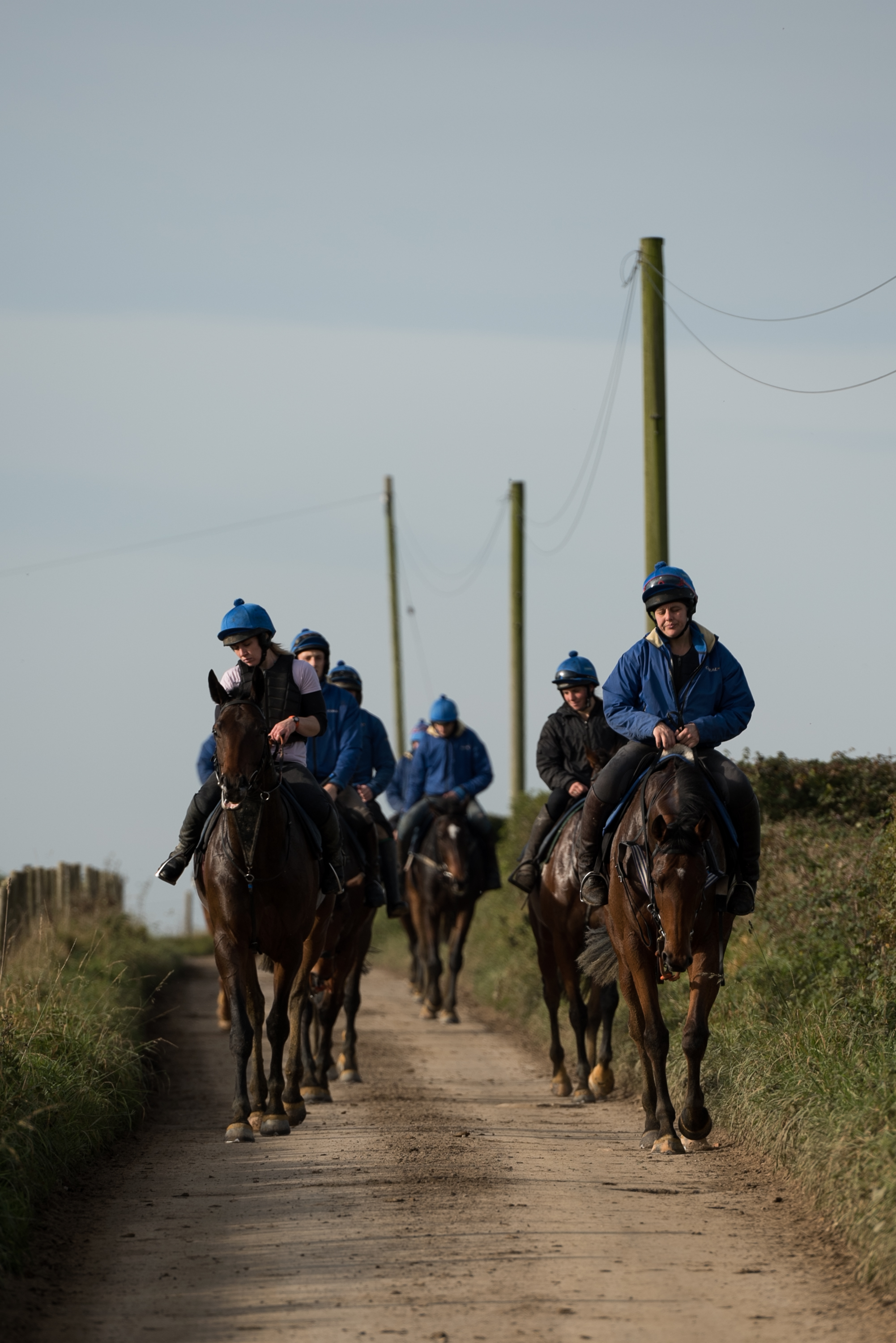
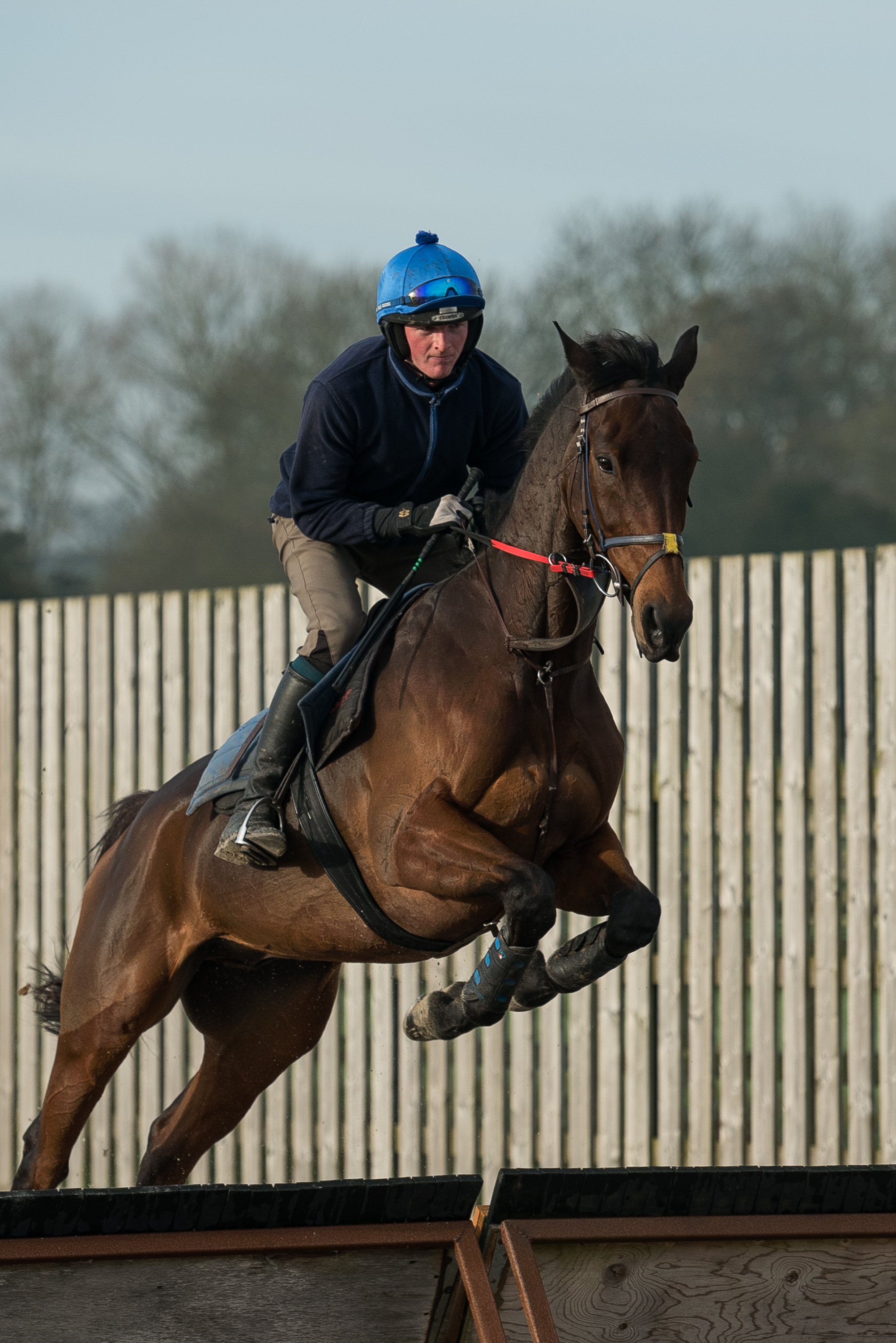
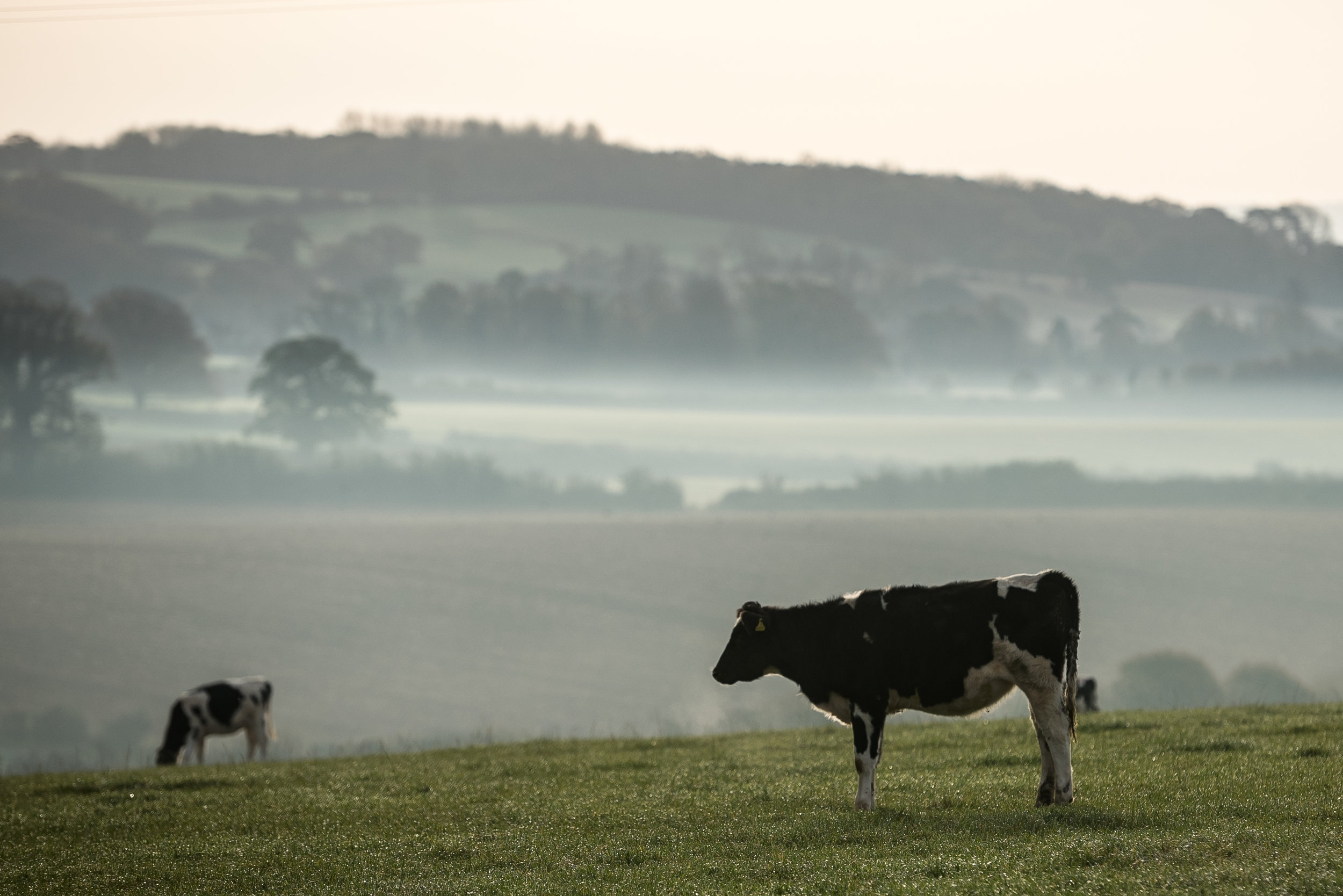
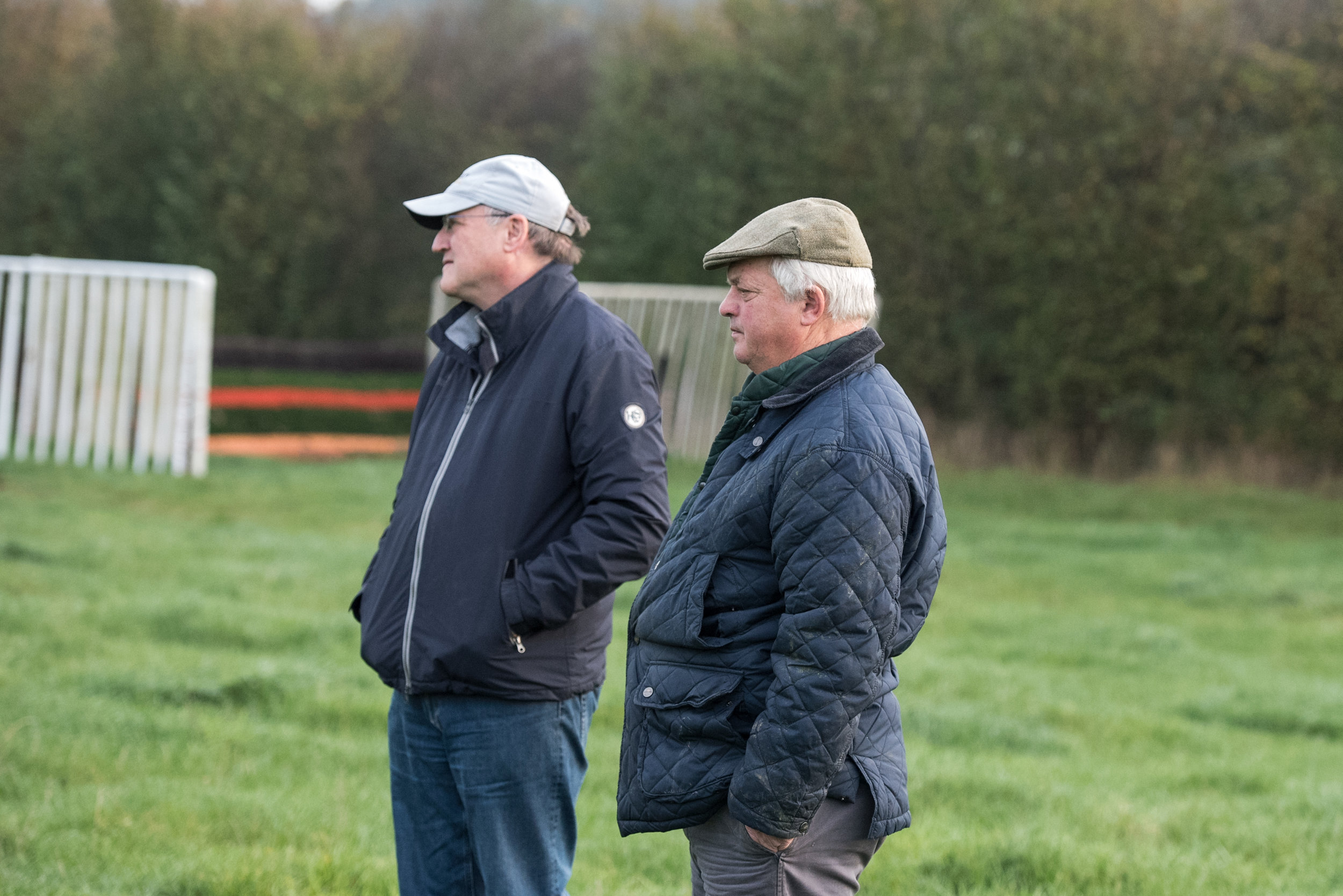
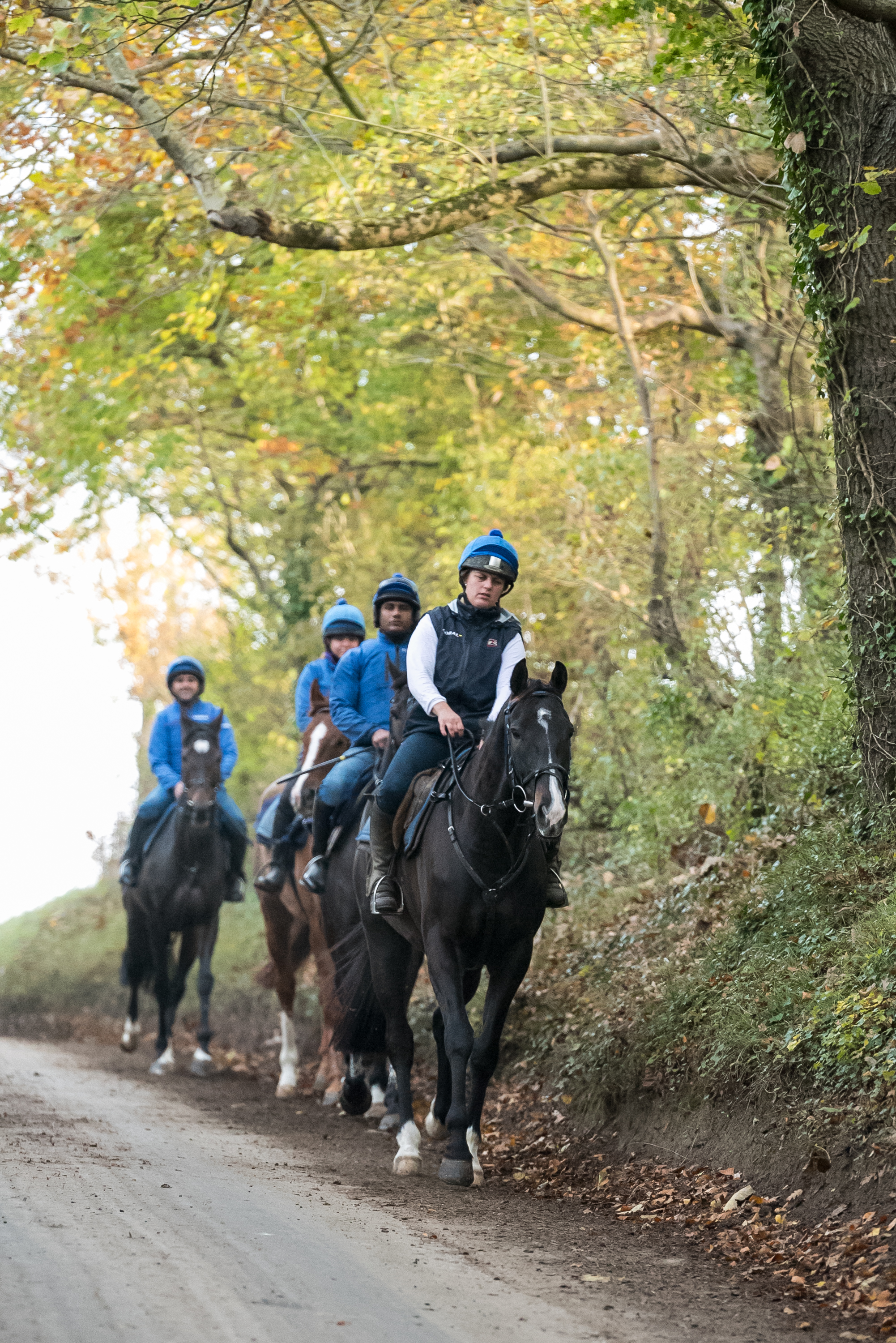
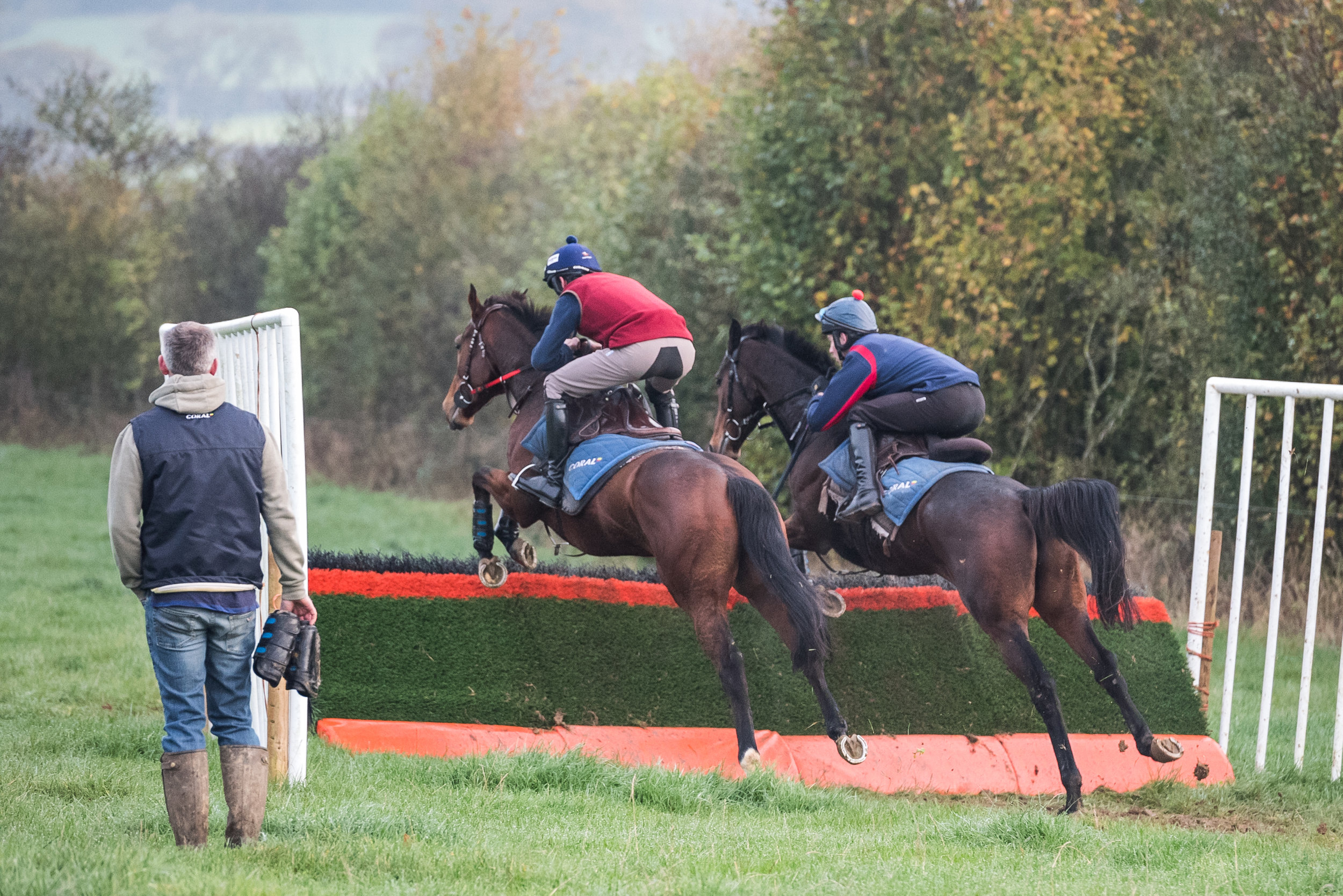
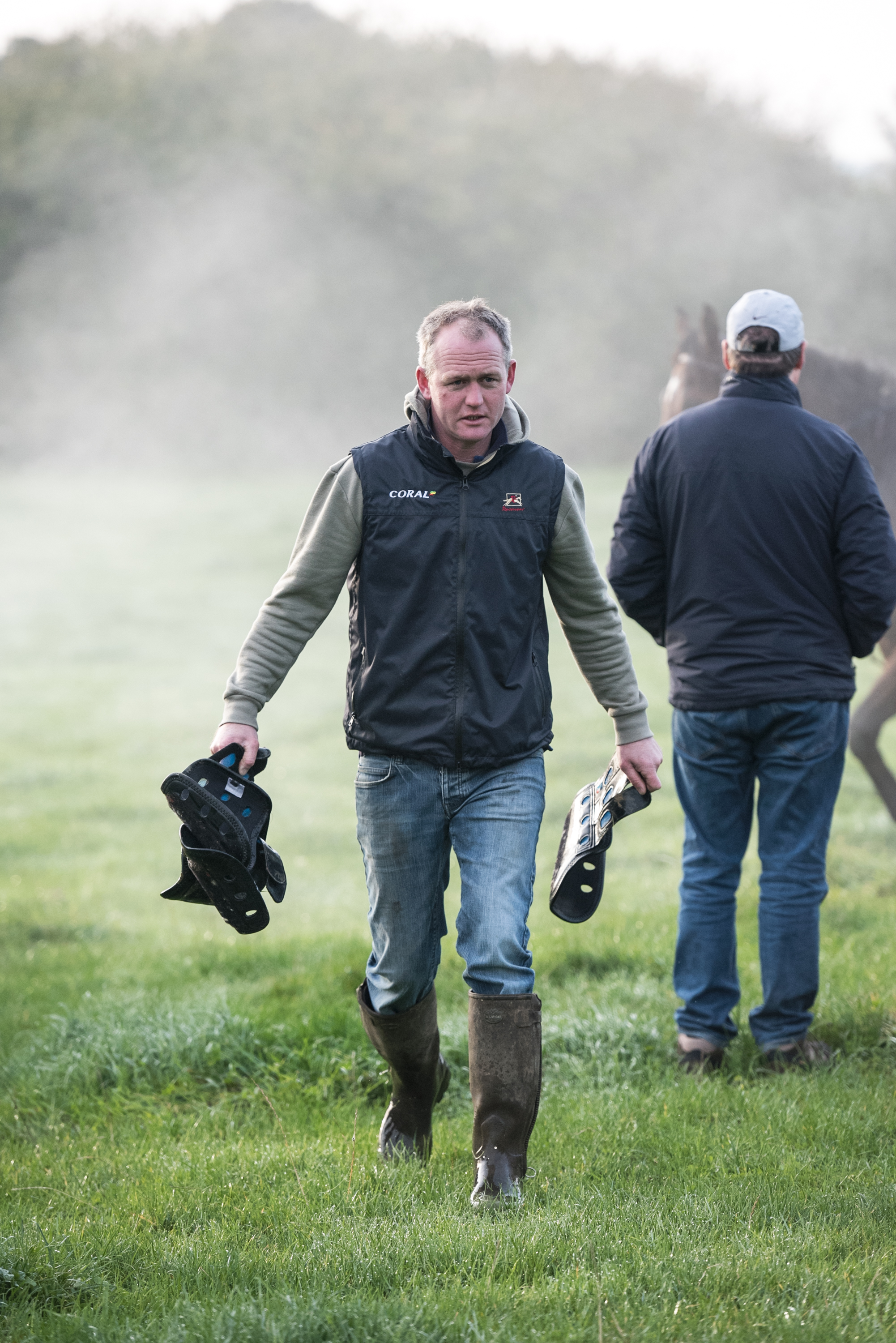


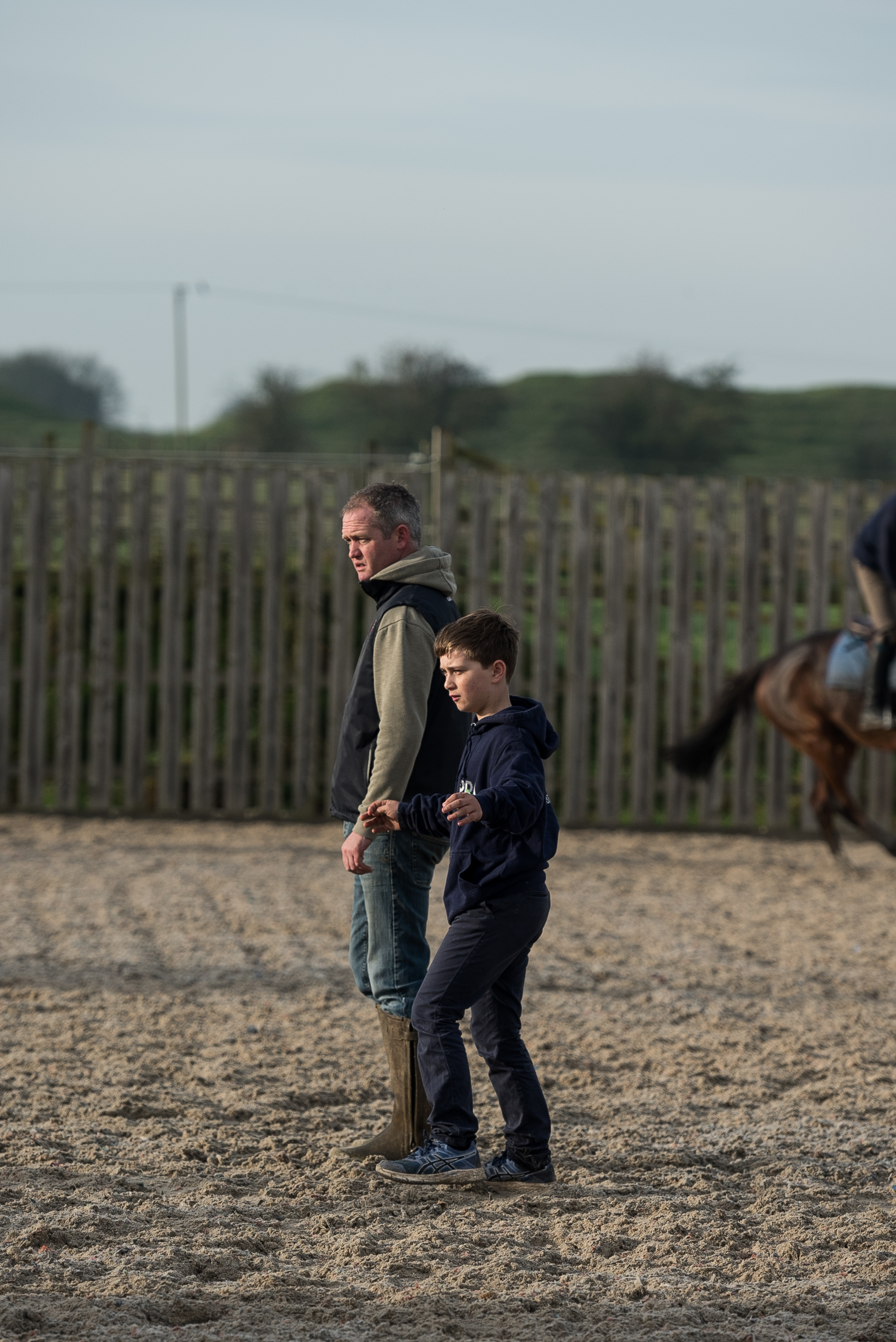
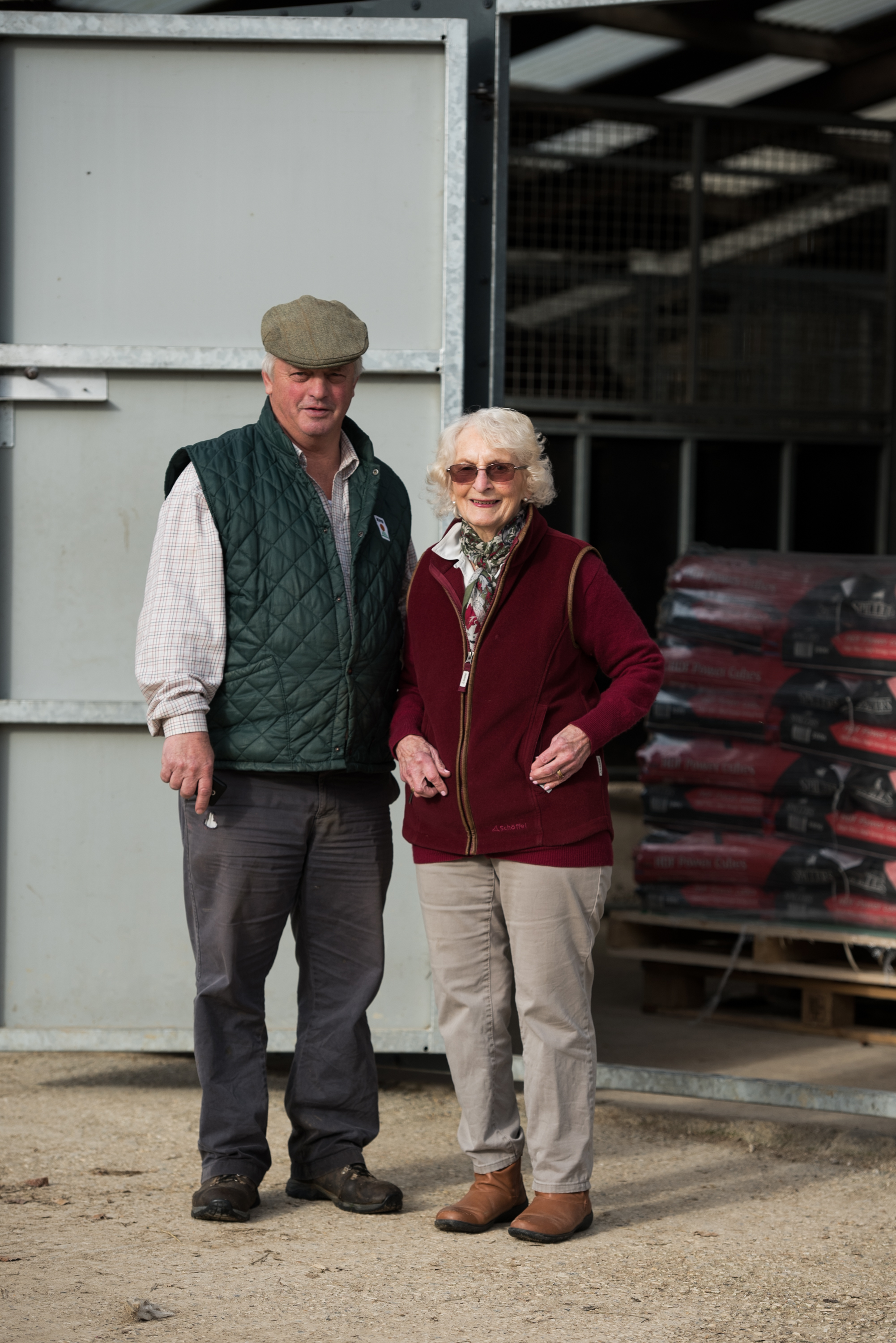
The Positive and Negative Effects of Oil in Equine Nutrition
Published in European Trainer, January - March 2018, issue 60.
Oil is a regular addition to modern racing diets, either by feeding a high oil-containing racing feed or through extra addition of liquid vegetable oil. Research over the years has shown that oil is palatable to horses and digested very well, and that there is little difference in digestibility between the main types of vegetable-based oils used.
Oil that is integral to feed ingredients, such as that found in rice bran, linseed, naked oats, soya, etc., may have a marginally lower digestibility, as this will depend on how digestible the encapsulating matrix is to the horse. However, in the main both free oil and integral oil is well tolerated and digested in horses.
In a natural environment, horses can easily consume between 2-3% of their body weight as dry matter from pasture. Oil has always been a natural part of the horse's diet, as grass contains about 2-3%, which may seem low but can provide the equivalent of 200-400mls of oil per day. Other forages, such as hay, haylage, and chaff, will also contain oil at a similar level on a dry matter basis.
Horses can tolerate up to 20-25% of their total energy intake coming from oil, and this has been exploited successfully....
To read more - subscribe now!
Buy this issue online here
Gallery
Back to School: Dressage as a Training Tool
Published in European Trainer, January - March 2018, issue 60.
To those not familiar with the idea, or indeed not familiar with the intricacies of managing the mind and body of the young thoroughbred, it might seem peculiar to take an animal bred for generations and engineered over centuries to display nothing short of super equine speeds, gargantuan leaps, and feats of middle-distance endurance, and to then turn it to the steadiest, most controlled, poised equestrian discipline. As mad a thing to do as this might seem at the end of such a horse’s career, to delve into it a day or so each week, or perhaps to go for an out-of-season dressage “staycation,” could seem just plain bizarre.
So why are we hearing more and more about the speedy souls that inhabit the world of horseracing sneaking out of the realms of the snaffle bit, flat saddle, jeans, and Cuban heel to indulge jodhpurs, curb chains, extremely high cantles, and Spanish topped-boots?
Well, it might not be as bizarre as it sounds. Three generations ago it was hard to find a trainer who hadn’t enjoyed some formal equitation training, most likely through the armed forces, but that was also an age where there was still some form of reliance upon the horse for anything as fundamental as travel, so there was simply a greater and more widespread understanding of the horse across the board. Many would have also known how to drive as well as ride simply from necessity. Later we will speak to one of the very few young trainers to have actively pursued driving, itself now a sport with an element of dressage.
Fewer and fewer trainers with each passing generation have a formal education in the fundamentals of classical riding, and it is perhaps only natural that in the face of such a decline there will be those that look to find an advantage in redressing this balance. Of course, there are always trainers who come to horseracing from more conventionally classical disciplines, many of them hugely successful regardless of code, country, or surface, and these exceptions prove as interesting as those who seek the help of specialist dressage instructors or riders to enhance the complex set of skills that have led to their success...
To read more - Buy this issue online here
Or Subscribe!
Gallery
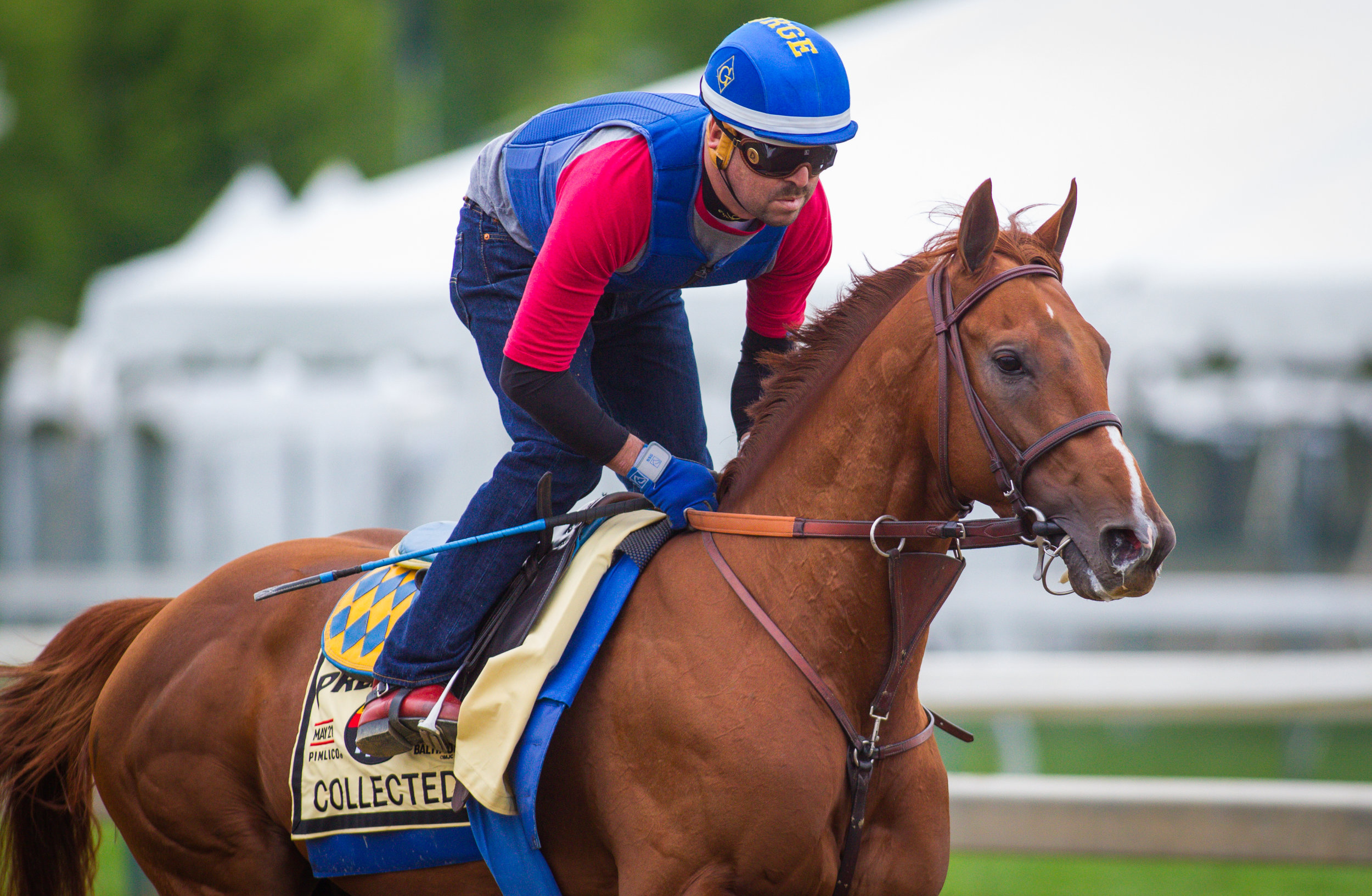
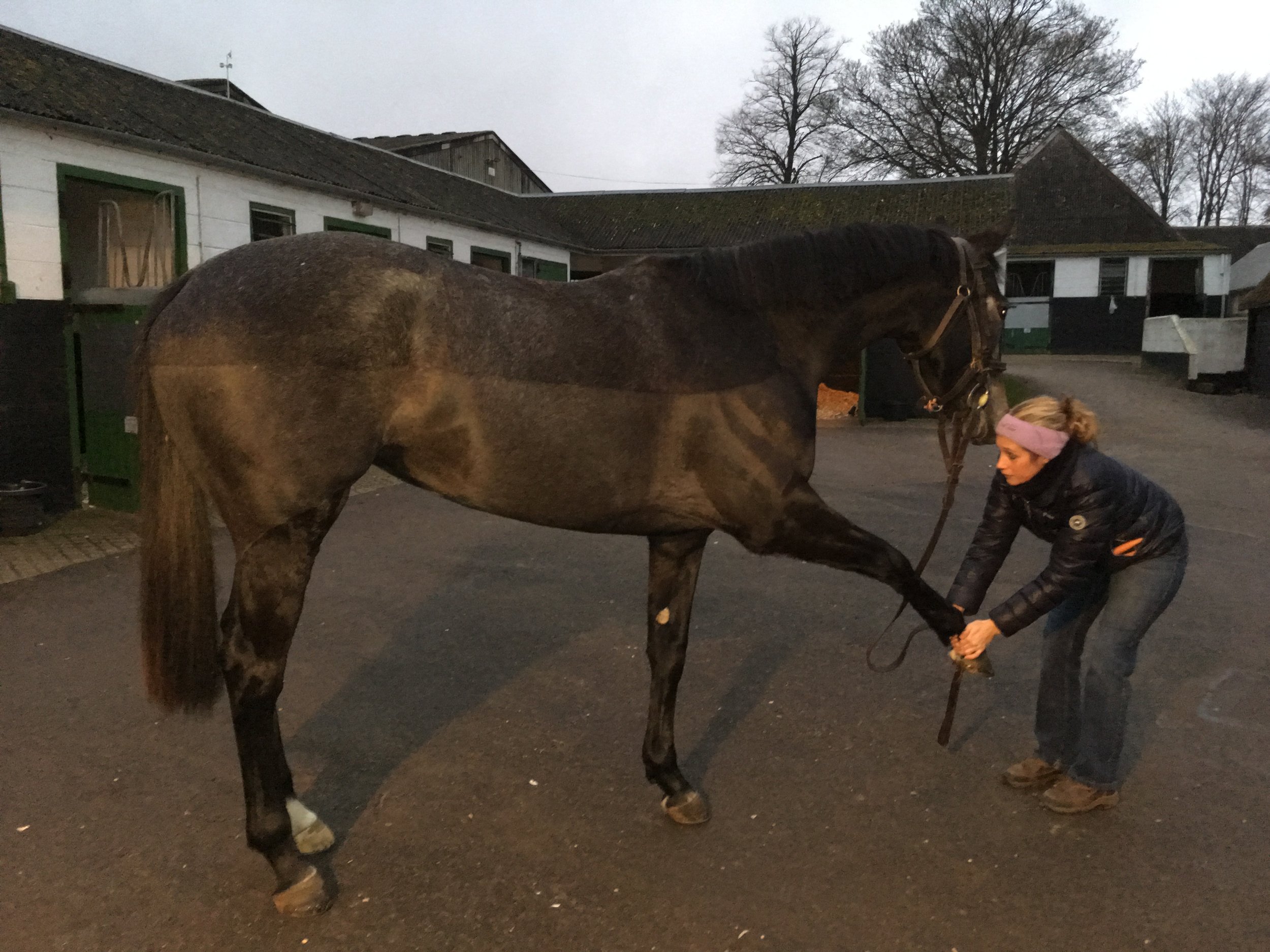
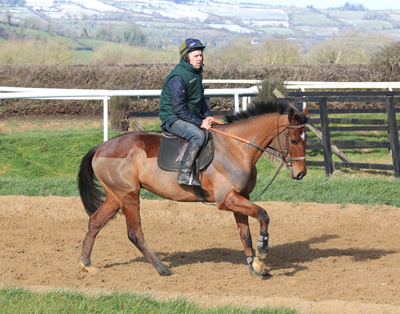
Horseracing in South Korea: A GLOBAL VISION
Published in European Trainer, January - March 2018, issue 60.
On the evening of 19th January 2017, something special happened in Dubai. To the casual spectator it might have seemed like any other horse race, but to viewers in Korea, the 1200m District One Handicap at Meydan was a watershed moment in their nation’s sporting history. Because the winner of this race was Main Stay, a four-year-old colt trained by Kim Young Kwan and the first Korean-trained horse to win at a significant international meeting since thoroughbred horse racing was established in South Korea almost 100 years ago. What is more, the winner carried the (KOR) suffix in the racecard, underlining the fact that the country is now capable of producing internationally competitive thoroughbreds.
Yet as Main Stay crossed the line on that fateful night, even switched-on racing enthusiasts and professionals with a broad international perspective may have asked, “So they race in Korea?”
Indeed, this otherwise significant nation’s racing industry remains relatively unknown across the globe. Recent developments have brought Korean racing into the spotlight however, and notable domestic and international expansion projects put in place by the Korea Racing Authority (KRA) could soon see it established as an influential player on the global racing scene....
To read more - subscribe now!
Buy this issue online here
Gallery coming...
Starting Up: Where in the EU can New Trainers Get the Best Start?
Published in European Trainer, January - March 2018, issue 60.
In the previous issue of European Trainer (Issue 59, October-December 2017), the Trainers’ Daily Rates Survey was summarised, while Europe’s best training centres were also featured. From the former we learned that only 38% of trainers derive their sole income from training, yet this doesn’t deter hopefuls from taking out their first licence. So, where is the best place to set up a new yard to tip the balance in your favour?
Just over half of European trainers keep between 10-50 horses; fewer than 10% have more, and it is generally not considered to be economically viable to train fewer than 30 horses. The average daily rate per horse charged by a trainer is €43, which would provide a weekly revenue of €9,030 for a 30-horse yard.
Comparing daily rate to staff wages, there is little benefit to be found in starting up in one country versus another. The EU minimum wage maintains a constant across the board although the stable staff associations of some countries, such as Ireland, do ensure that a higher rate is paid. Therefore, anywhere from 50-90% of the daily rate charged will go to staff. A shortage of good riders and experienced staff is currently being endured throughout Europe, so, again, a new trainer is free to choose any location...
To read more - subscribe now!
Gallery
The On-going Effort to Minimise the Rate and Impact of Fractures
Published in European Trainer, January - March 2018, issue 60.
In thoroughbred racing, musculoskeletal injury is a major safety concern and is the leading reason for days lost to training. Musculoskeletal injury is the greatest reason for horse turnover in racing stables, with financial implications for the owner and the racing industry. Injuries, particularly on race day, have an impact on public perception of racing.
Upper limb and pelvis fractures are less common than lower limb fractures, but they can lead to fatalities. Reducing the overall prevalence of fractures is critical and, at the very least, improving the rate of detection of fractures in their early stages so the horse can be withdrawn from racing with a recoverable injury will be a big step forwards in racehorse welfare. Currently, we lack information on the outcomes following fracture, and an article recently published in the Equine Veterinary Journal (EVJ) from the veterinary team at the Hong Kong Jockey Club (HKJC) addressed this important knowledge gap.
Hong Kong Fracture Outcome Study
The HKJC veterinary team is in a unique position to carry out this work because their centralised and computerised database of clinical records, together with racing and retirement records, allows them to document follow-up, which is all but impossible elsewhere in the world. Dr Leah McGlinchey, working with vets in Hong Kong and researchers from the Royal Veterinary College, London, reviewed clinical records from 2003 to 2014 to identify racehorses that suffered a fracture or fractures to the bones of the upper limb or the pelvis during training or racing, confirmed by nuclear scintigraphy, radiography, ultrasonography, or autopsy....
To read more - subscribe now!
Gallery
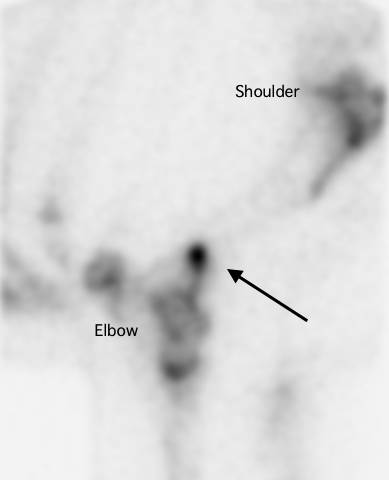
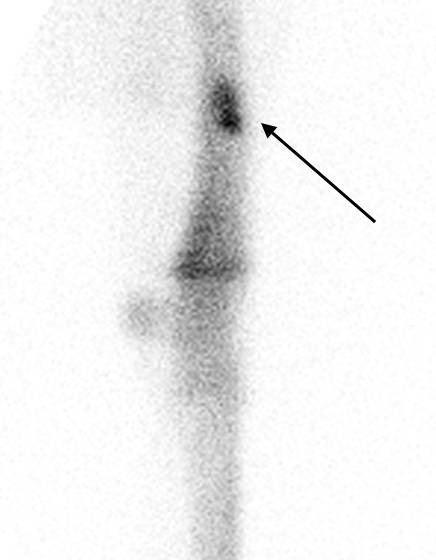
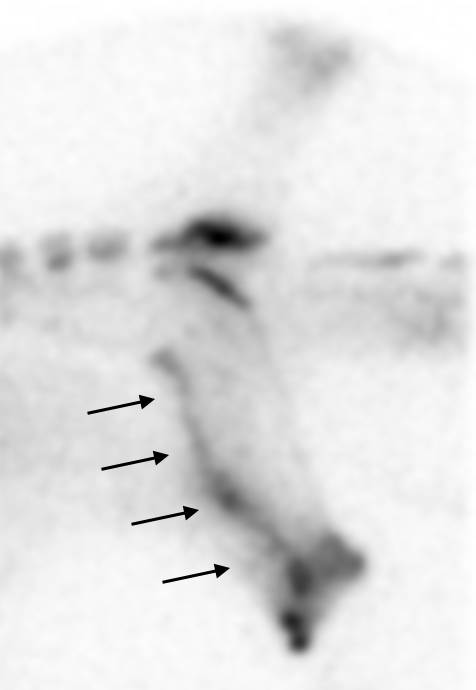
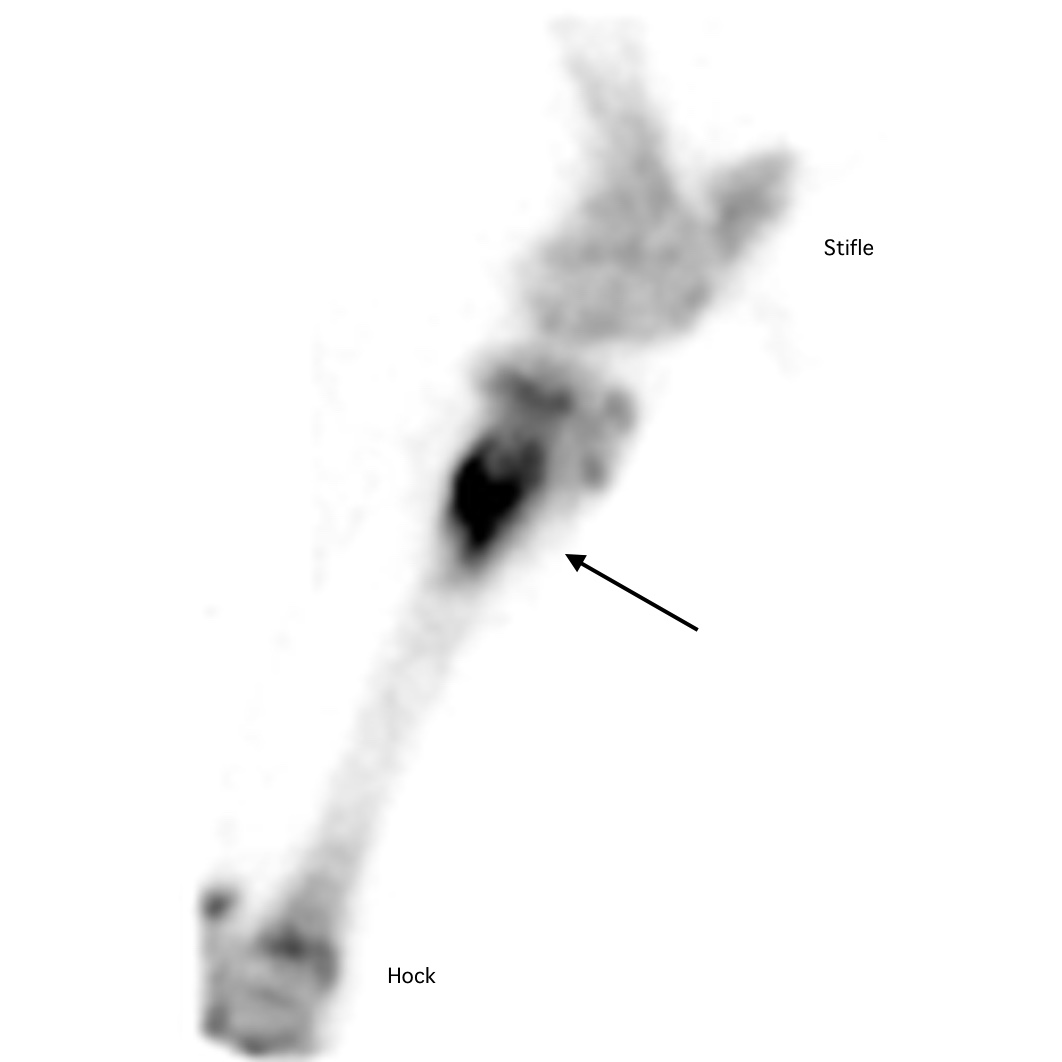
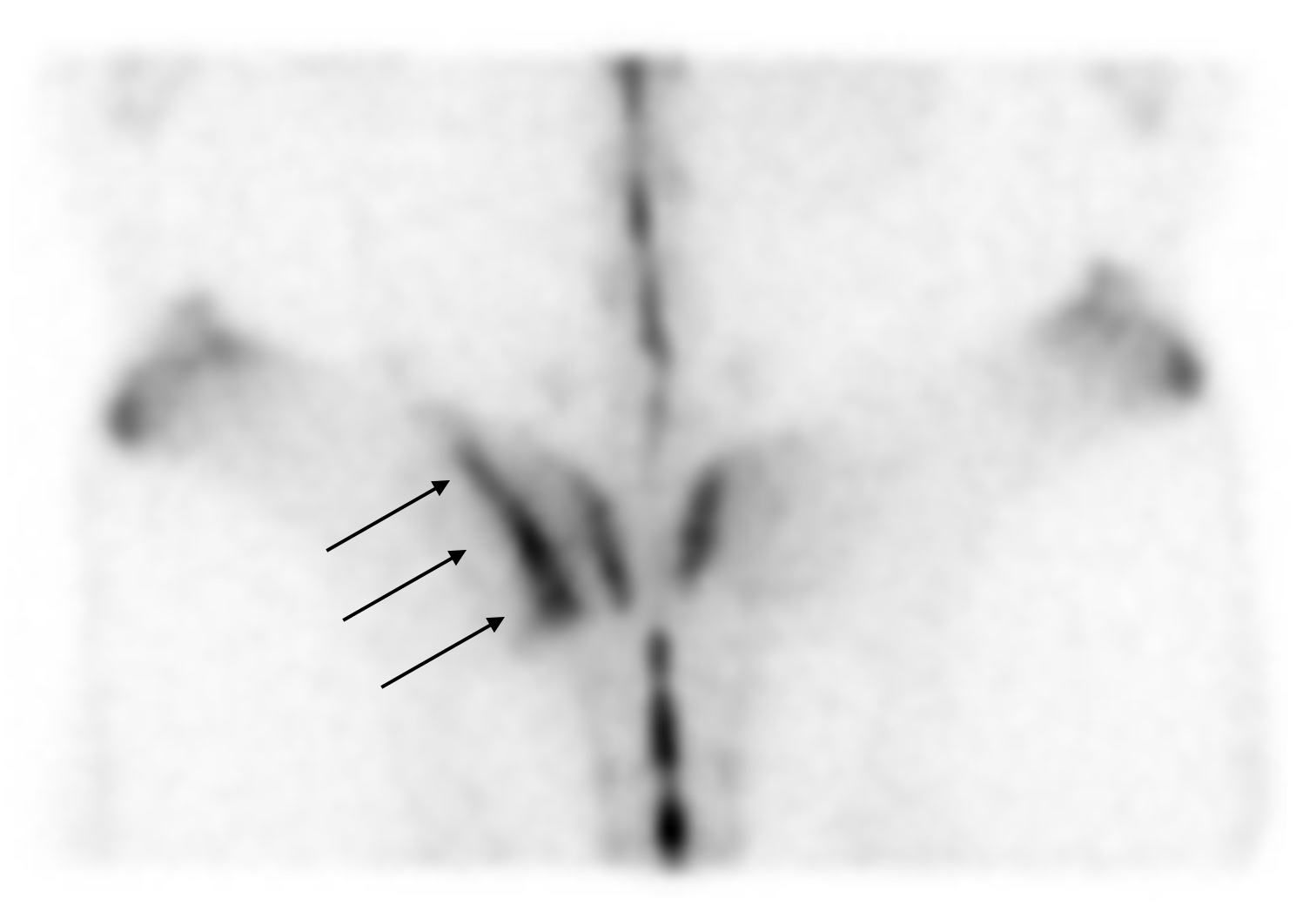
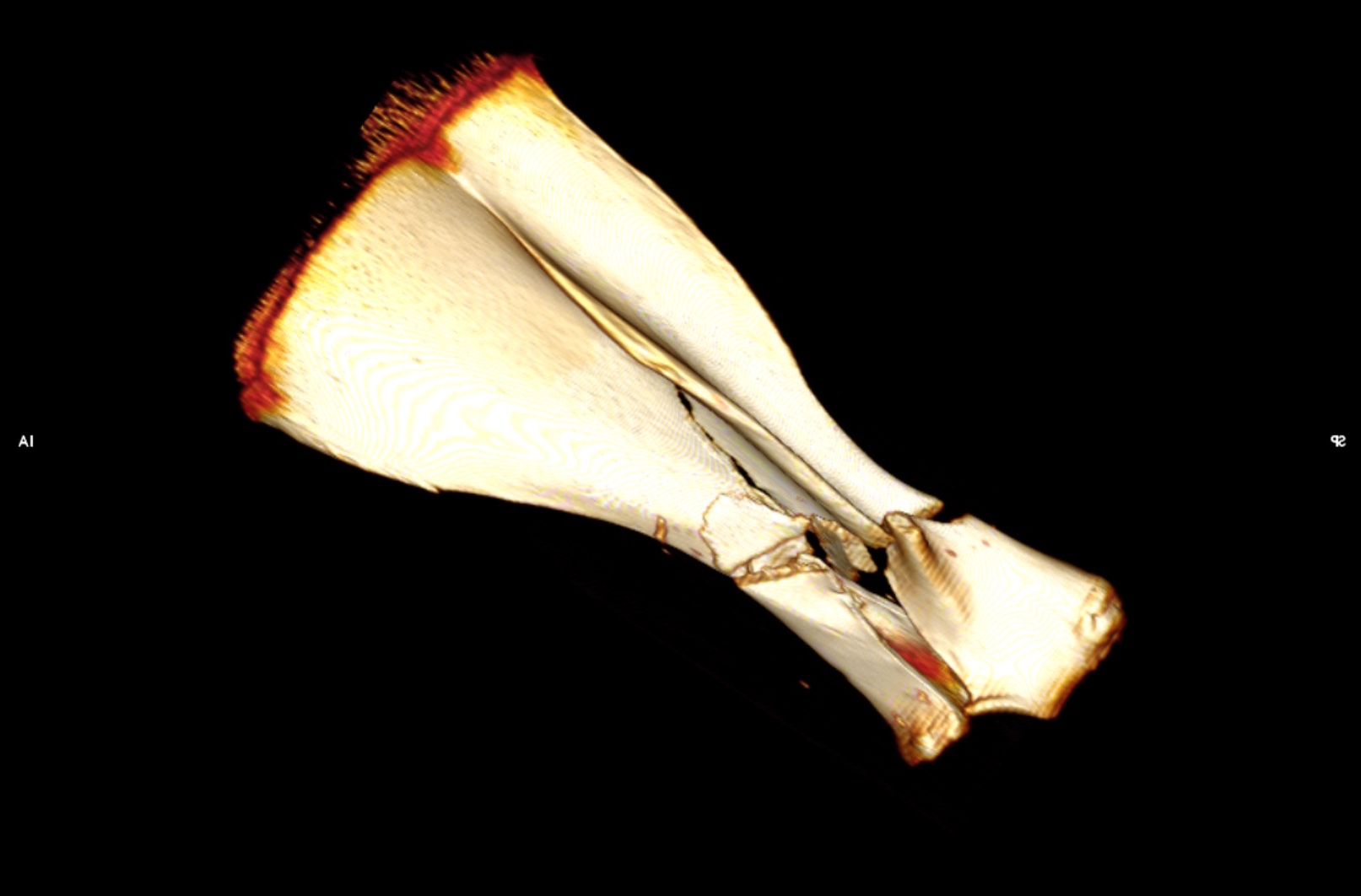
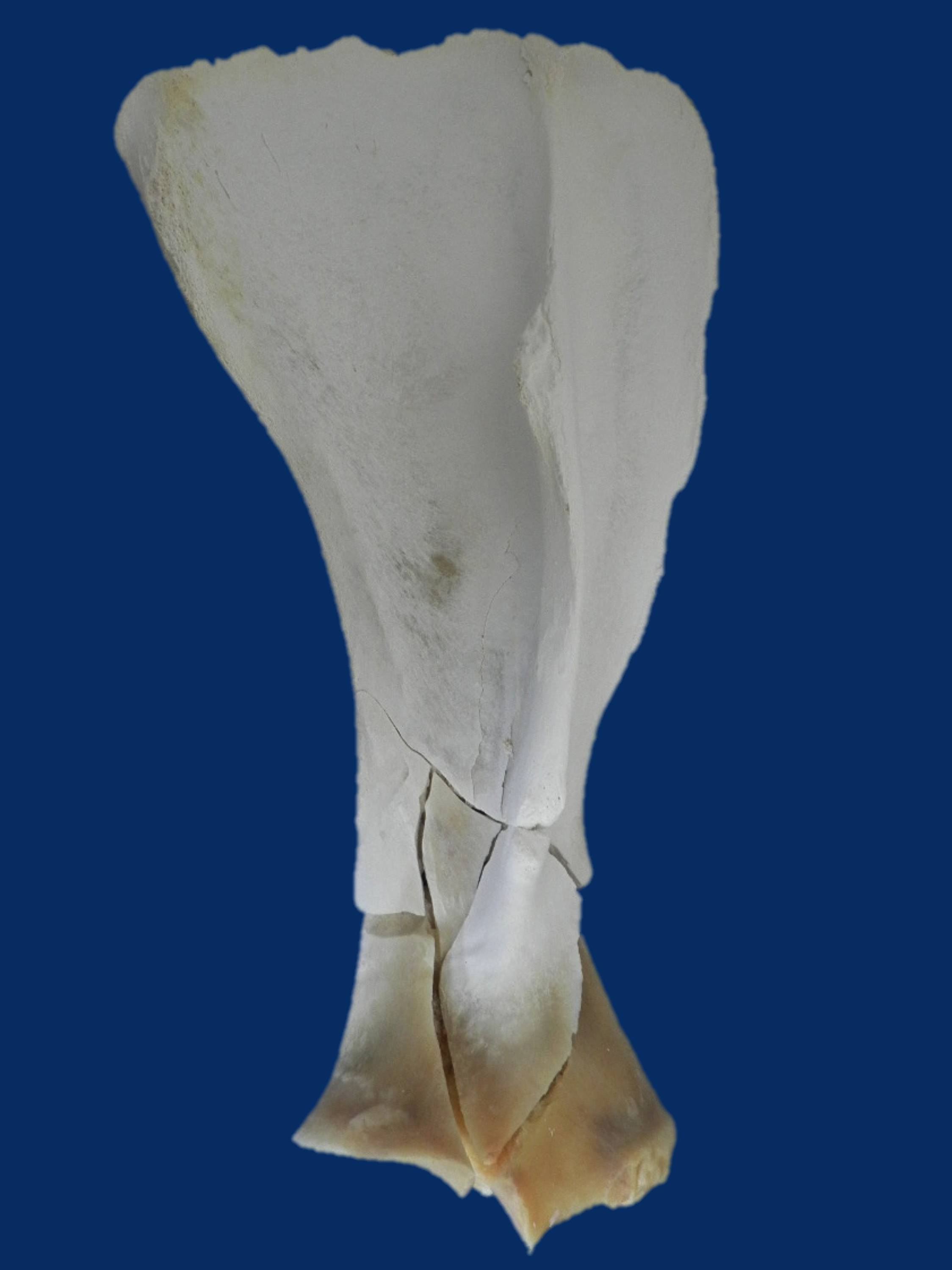
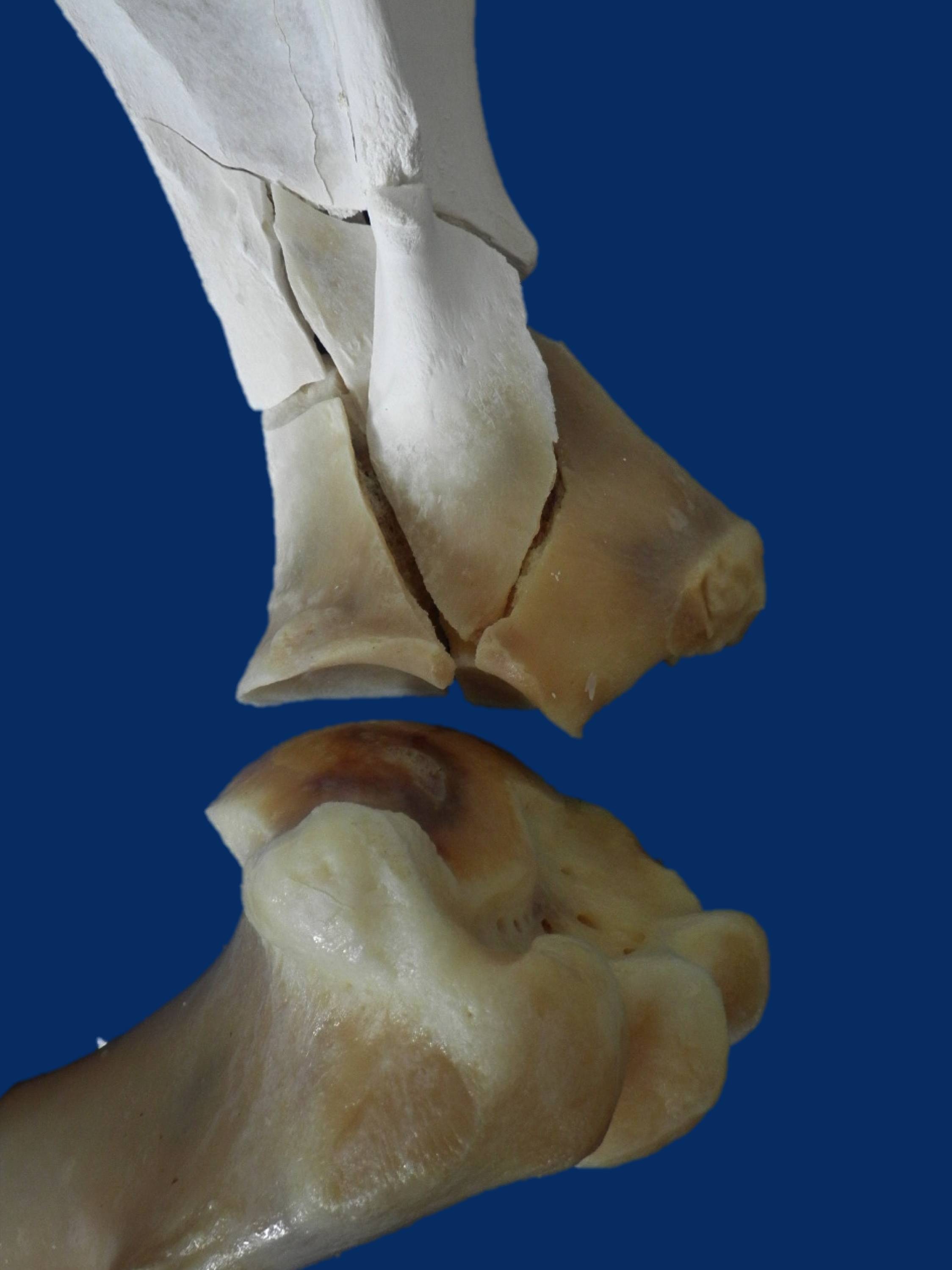
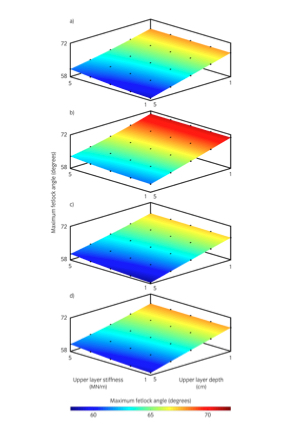
Getting to Grips with Strangles: Working Together to Break the Strangles-hold
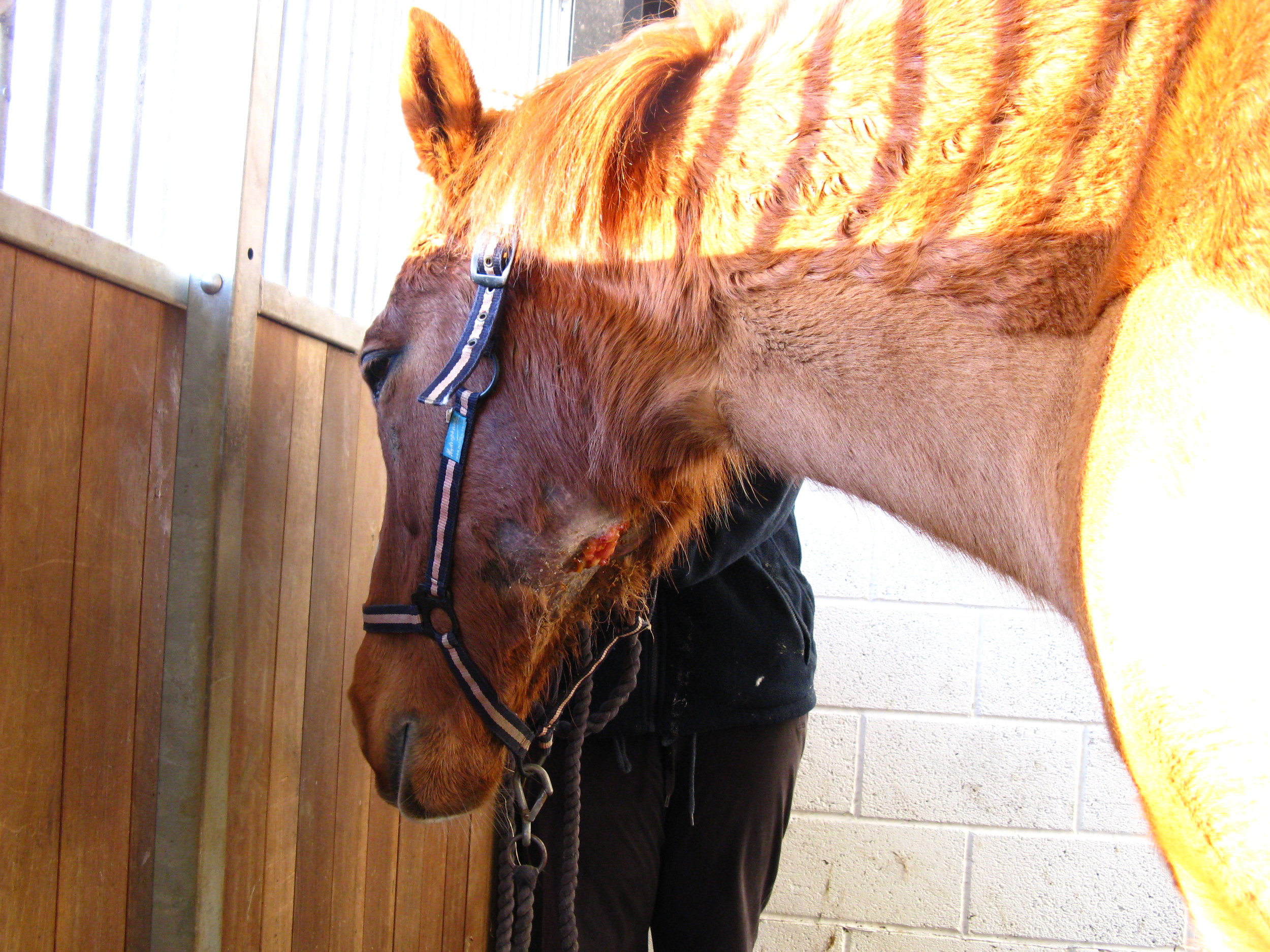
Published in European Trainer, January - March 2018, issue 60.
Strangles, caused by a bacteria called Streptococcus equi, is one of the most frequently identified infectious diseases of horses worldwide. More than 600 outbreaks of Strangles are diagnosed in the UK each year. Infected horses typically develop fever followed by abscesses in the lymph nodes of their head and neck.
These abscesses are painful and the affected horses will often lose their appetites and become depressed. Some horses can be badly affected during an outbreak and the disease kills around one in a hundred animals. The bacteria can spread quickly through yards via contaminated drinking water, food, tack, equipment and people. Some outbreaks can involve all of the horses on a yard and all outbreaks require movement restrictions that usually remain in force for over two months. Consequently, Strangles is responsible for considerable economic and welfare cost. This article will provide an update on the progress being made towards eradicating Strangles and highlight what we can each do to keep our horses safe.
An age-old problem:
Strangles was first described in 1251 by Jordanus Rufus, a knight of Emperor Fredrick II. The disease was seen as inevitable and better for horses to fall ill sooner rather than later to get the disease over and done with. In 1811 Napoléon, Emperor of France, wrote a letter to request that the 543 horses being sent to his army should be “at least 60 months of age and should already have recovered from Strangles” so that they would be less likely to fall ill from this disease on the battlefront. More than 200 years later, many people still believe that it is inevitable that their horse will suffer from Strangles sooner or later. However, we understand so much more about the disease today and really can significantly reduce the risk of horses falling ill...
To read more - subscribe now!
Gallery
Staff Focus – You are Only as Good as Your Team
Published in European Trainer, January - March 2018, issue 60.
A major challenge facing trainers throughout Europe is the attraction and retention of skilled riders and grooms. Trainers are competing with many other industries, and fewer people favour the type of work offered in a racing yard, which means that trainers need to be more innovative and proactive when it comes to staff management, retention, and recruitment.
Entries for the Lycetts Team Champion Award in Britain closed on 1st December, but for those who didn’t enter, and for trainers in the rest of Europe, it is not too late to examine the aim behind the inaugural award and use the judging criteria to establish a team of excellence in your own yard.
The idea behind the Lycetts Team Champion Award is to reward the stables with good employment practices in place creating the best team ethos, and it is an initiative that will hopefully combat the long-term stable staff crisis affecting many yards. The award is judged on the methods trainers use to attract and retain staff, plus the safe working practices employed. The winning team receives an item of infrastructure or equipment that will improve working life within the yard.
It is hoped that the stories emerging from the award will publicly celebrate the benefits of teamwork and demonstrate that racehorse trainers provide rewarding and well-supported jobs, and this is an ethos that can be easily extended beyond the award itself...
To read more - subscribe now!
Licensing and Integrity - The Subject of the Latest EMHF Seminar
Published in European Trainer, January - March 2018, issue 60.
The word ‘integrity’ must be one of the most commonly used in the output of racing authorities and, in our world, it carries a very particular meaning. Sure, it encompasses the normal definition of ‘adherence to moral and ethical principles’ but, with us, what we’re mostly talking about is the ‘straightness’ of how our sport is run and of those involved.
The latest in the EMHF’s seminar programme, hosted and delivered by the British Horseracing Authority (BHA) and Newbury Racecourse, took integrity as its subject and majored on the processes and criteria by which trainers, jockeys, and others are licensed in Britain, and the structures in place to combat race-fixing and unfair betting practices on horseraces.
The BHA was an appropriate host, since delegates could benefit from the conclusions reached following a major integrity review that British racing’s governing body had undertaken, aimed at improving “confidence amongst participants and the racing and betting public.” The review confirmed that measures to combat race-fixing and doping remained of paramount importance.
Within the BHA’s remit, integrity is certainly given high priority. The very first item under ‘Things we do’ in its latest annual report reads: “Keeping racing fair and clean: We aim to maintain the integrity of British racing by supporting participants to comply with the rules and dealing appropriately and effectively with rule breaches.”
The sheer scale and cost of the infrastructure that is committed to this aim, in a major racing nation such as Britain, may surprise readers. The staff complement of the BHA’s Integrity and Regulatory Departments numbers over 100. Within this total, the 40 or so who make up the field force teams of clerks of the scales, starters, judges, and inspectors of courses are outnumbered by those covering areas such as intelligence (collection, assessment, development), racing & betting analysis, investigations, licensing and registration, stable inspections, anti-doping and equine welfare integrity....
To read more - subscribe now!
Part I: The Thoroughbred Trainer in the Digital Age
Published in European Trainer, January - March 2018, issue 60.
This is the first article in a two-part series on social media for thoroughbred trainers. It examines social media usage and issues faced by trainers who wish to promote their business online. Part II will focus on broader industry issues and how trainers may use social media to affect positive change and ensure the future of the sport.
In less than 15 years, social media has changed the way we meet, work, shop, communicate, consume news and entertainment, find romance, and more. Few aspects of our lives have been left untouched by this remarkable phenomenon. Social media has made a limited group of people incredibly wealthy, empowered others to create new businesses or expand existing ones, and made various individuals famous or infamous.
Simply defined, social media consists of online networks that allow users to connect, create, communicate, and share in virtual communities. And we cannot seem to get enough.
• 73% of Europeans use some type of social media.
• 41.7% of Europeans use Facebook, the most popular social media platform.
• Many Europeans, including three-quarters of Facebook users, log onto social media sites as part of their daily routine.
• Most European social media users utilize more than one social media platform.
• The growth of social media is likely to remain steady for years to come.
As a trainer, you may be one of the hundreds of millions of Europeans who is familiar with the ins and outs of social media. You may be an occasional, routine, or even heavy user.
Alternatively, you may be a hold-out who is too busy or privacy-oriented. Regardless of your personal opinion of social media, it is worthwhile to step back and examine how social media may assist in expanding your training business, or, alternatively, present potential risks including both civil liability and criminal violations.
As a trainer, unless you have a full roster of owners, it is wise to have a social media presence to promote your business. Consider the many positives:
Getting Found.....
To read more - subscribe now!
Trainer of the Quarter - Jessica Harrington
Published in European Trainer, January - March 2018, issue 60.
Trainer Jessica Harrington has maintained an excellent run of form under both codes through 2017, including in the most recent quarter, which included a Listed success on the Flat at Great Yarmouth; winning seasonal debuts for two of the stable’s leading lights, Sizing John and Jezki; and a close second at Ascot’s Champions meeting for Torcedor.
On the back of winning three Gold Cups at the end of last season, the winning return of Sizing John in the Grade 1 John Durkan Memorial Punchestown Chase pleased Harrington enormously. She said, “I was delighted with Sizing John. You never know what mark those three races might have left and he’s in great form.”
So how does Harrington rate 2017 overall, given the spread and level of success through the year?
To read more - subscribe now!
NEW: 'Hindsight' - Clive Brittain
Published in European Trainer - October - December 2017, issue 59
Click here to order this back issue!
In a training career spanning more than 40 years, Clive Brittain and his Carlburg Stables in Newmarket became synonymous with high-profile success in Britain and on the international racing scene.
Clive’s lengthy resume of top-flight wins includes six British Classics and overseas triumphs in the Breeders’ Cup Turf and Japan Cup, achieved by horses such as the legendary Pebbles, User Friendly, Jupiter Island and Warrsan.
Two years on from his retirement, Clive reflects on the pivotal moments and people in his amazing career.
During your time with Sir Noel Murless, you were part of the move from Beckhampton Stables to Newmarket, which has been your home for more than 60 years. What are your memories of working for Sir Noel Murless and what changes have you seen in Newmarket in this time?
“Sir Noel was a very good boss, a very fair man, and never changed. I started out as an apprentice jockey, but I made a very good stable man and went with Sir Noel and the team to Warren Place. At the time, the stable held around 70 horses, which was a lot in those days, as most of established trainers would have around 50 horses with Geoffrey Brooke possibly having around 60, most of which were two-year-olds.
“Sir Noel later became the first trainer to have more than 100 horses, but numbers today for the larger trainers are typically well over 150 horses per trainer. We later had 160 horses between two yards, Carlburg and one at Stetchworth, on Bill Gredley’s estate, of around 30 boxes.”
You achieved notable success with long-priced runners in the big races (such as Terimon's second in the 1989 Derby at 500/1). What do you think of the BHA's recent decision to put a minimum qualifying rating of 80 on contenders for the Group 1 races for three-year-olds and upwards?


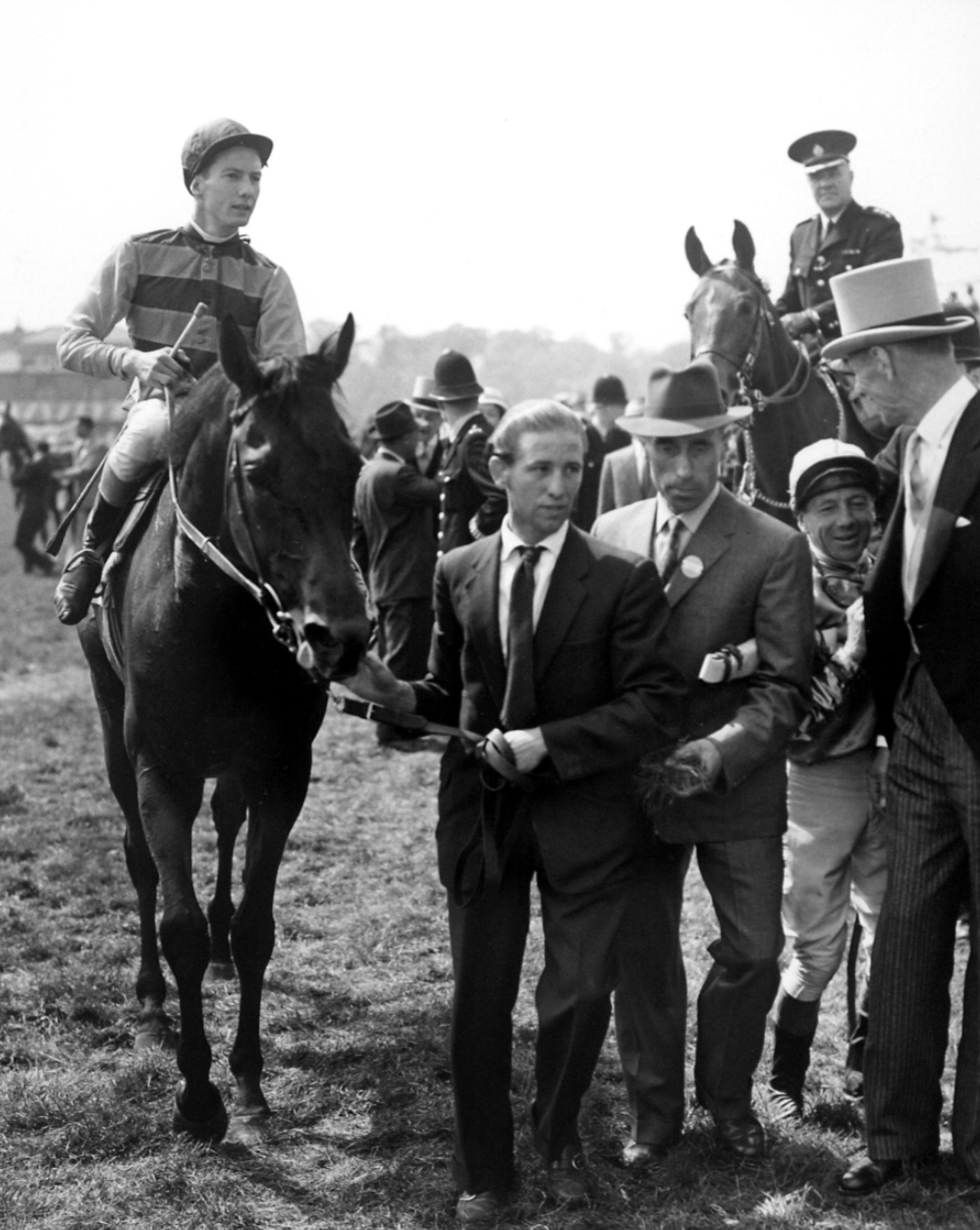

To read more of this interview - subscribe now!
EMHF - Our concern for horse welfare takes a myriad of forms
Paull Khan - News from the EMHF
Published in European Trainer - October - December 2017, issue 59
Click here to order this back issue!
In the wake of the now infamous incident in which jockey Davy Russell was seen to strike his horse on the head prior to the start of a race, the marked difference between the media reaction in Ireland (more forgiving) and that in Britain (more damning) was commented upon.
Just one example of the wide variation, as between European countries, in public opinion on horse welfare, and animal welfare more widely. In some regions, the ‘volume level’ of discussion of such matters is turned up high; not so in others.
In a sport with no global Rules Book, it would be strange if these cultural differences were not reflected to some extent in the practices and regulations of individual Racing Authorities. And sure enough, they are. Indeed, what a country’s Rules of Racing says about its culture would make for a fascinating study. One could make a crude start by marking up, on a map of Europe, the number of whip strikes allowed in a race by the various countries. Very broadly, it would resemble a climatic map of the continent, with higher numbers accepted in the hotter south, reducing as one travels north until reaching the point of zero tolerance in Norway.
Skim through the Rules Book in any of our countries and you will find a plethora which promote the welfare of our racehorses. In many cases, that aim is indeed their sole purpose. These Rules and procedures fall into many categories – from the horse-care component of the course which a trainer must pass in order to be granted a licence, to the requirement for a minimum number of vet’s to be present before a race meeting can take place, to enforced stand-down periods following the administration of certain veterinary interventions, to the mandatory abandonment of jump racing when the ground is designated ‘Hard’ – the list goes on and on.
To read more of this article - subscribe now!
A report from the Merial - Performance Horse CPD and Raceday at Gowran Park
Becky James BSc, MSc - Haygain
Published in European Trainer - October - December 2017, issue 59
Click here to order this back issue!
Vets from all over Ireland congregated at Gowran Park racecourse in July for a continuing professional development event on the Performance Horse. The event, organised by European Trainer Magazine and Merial Animal Health, was the second in a series of veterinary CPD events for 2017 and featured a panel of expert speakers. The event was co-sponsored by Haygain and Connolly’s RED MILLS.
Managing Inflammatory Airway Disease – Dr Emmanuelle Van Erck-Westergren
The first speaker Dr Van Erck-Westergren was due to fly in from Brussels on the morning of the event, so when her flight was cancelled at the last minute there was a moment of concern for the organisers but they arranged to bring her into the room via a video link so all was not lost!
Using her experience in practice at the Equine Sports Medicine Practice in Belgium, Dr Van Erck explained the importance of vets helping clients to manage the environment of the horses to prevent and manage Inflammatory Airway Disease (IAD). She described managing the horse’s environment to reduce exposure to noxious inhalable particles and improve hygiene and ventilation in the stable as the cornerstone to the success of treating IAD.
Important considerations for the environment include building design, bedding, stable activities and most critically, the forage, as this is in the horse’s breathing zone. Dr Van Erck explained that hay remains an important source of forage for horses but it is also a major source of dust and contaminants. Soaking hay is a cheap way of reducing airborne dust but it promotes bacterial proliferation and leaches out the nutritional value so well-made haylage or preferably steamed hay should only be fed to horses with IAD.
To read more of this report - subscribe here!
The Trainers' Daily Rates Survey
Published in European Trainer - October - December 2017, issue 59
Click here to order this back issue!
The survey was circulated by the European Trainers Federation representatives in member countries. Responses were received from the United Kingdom, Ireland, France, Germany, Austria, Norway and Belgium.
Results varied per country but indicated to be representative of those countries, with an even representation by Flat (41%), Jumps (15%) and Mixed (44%) trainers and feedback from small-scale (1-10 horses in training) to large scale (50+) yards. Trainers were asked to complete 28 questions relating to their current daily training rate charged to owners, the factors they feel contribute most to their daily rate, whether they make a profit, loss or break even, what factors would affect a potential increase in their rate, and what rate they feel they would ideally like to charge amongst other location-related questions.
The results indicated that average training daily rates are similar across the participating countries. The UK had the highest average at £45 (Euro equivalent at €49.95) with Ireland second at €45. France was concluded at €42 and neighbouring Germany at a lower average of €35. The lowest representation in Continental Europe was Austria at €26.
Overall, the number of horses in training varied with the highest representation (37%) training between 1-10 horses and 8.7% of respondents training 50< horses. Therefore, results represent the majority of trainers in Europe training between 1-50 horses.
Trainers were asked to rate various factors out of 10 that contribute most to the rate they charge....
To see the results from this survey - subscribe now!
Epiduroscopy: an exciting window into back pain in horses
Dr Timo Prange
Read full study online here: 2016 Jan;48(1):125-9. doi: 10.1111/evj.12470
Published in European Trainer - October - December 2017, issue 59
Click here to order this back issue!
Back pain is a well known cause of lameness, gait alterations and poor performance in sport horses. Up to 25% of dressage horse owners report back problems in their animals, but not only sport horses are affected.
Although racehorses compete at a younger age than other equine athletes, they might suffer from back pain more often than we think, autopsy studies have identified pathological changes in the back of the majority of examined young thoroughbreds. Until recently, it has been very difficult to investigate back pain and it is easy to overlook this as a cause of disappointing performance. A novel surgical technique which has recently been reported in Equine Veterinary Journal, may change all this.
How can epiduroscopy help veterinarians to find the source of pain in a horse with back problems?
While the spinal cord sends and receives signals directly from the brain, the spinal nerves are the communication pathway between the spinal cord and the body. Spinal nerves are, among other things, responsible for the movements of the muscles in the back and legs and for sending information about pain in the back and legs back to the brain. Injury to a spinal nerve can result in dysfunction of muscles or in pain. Fortunately, the spinal nerve roots are well protected from injury, first by the surrounding bony vertebrae and, after leaving the spinal canal, by a thick muscle layer. However, the nerve can be injured at the point where it exits the spinal canal. The spinal nerves exit the canal through the openings between two adjacent vertebrae. The opening is called the intervertebral foramina. Each opening is in close proximity to the facet joints that connect the vertebrae. Inflammation of these joints (facet joint arthritis) causes back pain and results in irregular growth of bone around the arthritic joint.
While severe bony changes can be picked up on radiographs, subtle changes can easily be missed. Unfortunately, even relatively small bony growths can impinge on the passing nerve and cause irritation and inflammation. Nerve root impingement is a recognized cause of lower back and leg pain in people and now that we have epiduroscopy available for horses, it will be possible to identify the prevalence and importance of this condition in equine athletes. This will be especially interesting for young racehorses, where facet joint arthritis can be found in the thoracolumbar spine of up to 97% of cases that undergo autopsy but currently there is no information about the effects of this arthritis on passing spinal nerves.
To read more of this article - subscribe now!
Training yearlings: Schools of thought around the world
Published in European Trainer - October - December 2017, issue 59
Click here to order this back issue!
Consider throwing a thirteen-year-old school child into a university environment straight from prep school.
Sights, sounds and influences that the young mind would struggle to compute; physical rigours on the sports field that would either disappoint the mind or cause physical damage. I cannot think of any parent that would choose this for their young adolescent. Yet we often do this to the young horse, plucking them straight from the sleepy pastures of their nursery into an environment that is measured upon its production of top-level runners. Perhaps we send them via the sales…an entrance examination of sorts.
When put like this it is clear that, as custodians of young bloodstock, we might consider a period of preparation during which the horse would be introduced to saddle and rider, taught the basic lessons that would allow it to fit into the programme of the trainer that its owner chooses, as well as a careful conditioning of the physical stresses that will be tested further upon its graduation to the greater strains that will be required to reach race fitness.
For the sake of this article pre-training will be considered to be the safe development of a young horse towards its first joining a trainer or returning from a break not enforced by injury, as opposed to rehabilitation. The American racing industry has the perfect phrase for this: Legging Up.
While there has been a constant growth in the number commercial pre-training yards in Europe over the last 25 years to satisfy a growing demand for this service, this is something that has been a long standing practice further afield, particularly in countries where there is stabling pressure at the racetrack or in metropolitan stables, not to mention numerous larger owners that have chosen to keep a greater part of the horse’s young career in their control by employing a farm trainer or establishing their own pre-training division.
To read more of this article - subscribe now!
Tendon function and failure: Recent advances
Published in European Trainer - October - December 2017, issue 59
Click here to order this back issue!
Tendon injuries continue to be one of the most problematic injuries that affect racehorses. One of major issues facing veterinarians and trainers is that we have little understanding of why tendons become injured in the first place, how such the SDFT in the horse acts like the spring of a pogo stick, stretching and storing energy as a horse lands, and releasing energy to aid a horse’s locomotion as the limb pushes off.
There is a lot of clinical and research focus on these “energy-storing” tendons (such as the equine SDFT), as it is these tendons which are most prone to injury, and it appears to be a property of the function of such high strain, elastic tendons which result in these significant injuries will lead to so much economic loss and welfare issues for the affected horses. Under such extreme mechanical demands, it is not surprising the SDFT is prone to overuse injury, particularly amongst racehorses. SDFT injuries are highly debilitating, requiring considerable rehabilitation periods and are often career-limiting.
There is little convincing evidence of efficacy for any current treatment, and even after extensive periods of rest and rehabilitation, re-injury rates are extremely high, with little knowledge of how best to safely reintroduce training. In the horse, tendons are also extremely long, due to the length of a horse’s leg. In the horse’s forelimb, there is no muscle lower in the leg than the level of the knee (carpal) joints, and tendons mainly extend from the level of the knee down to the hoof.
To understand why tendons, such as the equine SDFT, become injured and how we may develop methods to allow better treatments, we and other researchers, have been developing an understanding of how elastic “energy-storing” tendons function and how do they fail.
To read more of this article - subscribe now!
Lycetts Team Champion Award
Published in European Trainer - October - December 2017, issue 59
Click here to order this back issue!
The important role played by stable staff has always been recognised by the horsemen and women employing them, though perhaps not always shown. It has certainly been overlooked beyond the stableyard, with the apparent view outside of the racing industry that stable work is unskilled and without long-term prospects. This misguided view has been detrimental, discouraging young people outside of the industry to explore job prospects and consider a role with thoroughbreds.
Recognising the individual skillset of the various roles within a working yard is important and while it may take time to get used to new job titles, where for centuries Lad or Lass sufficed, the titles are helping to identify particular roles and logical career progression. Above all, we are learning to openly value our team members and reward their skill and dedication, which means a tremendous amount in terms of job satisfaction and morale.
A wariness of comparing our workplace to any standard business is understandable, but it is important to recognise it as a business and every trainer wants to operate successfully. Peter Burnet, of the Peplow Group, has delivered learning and development programmes for individuals, teams and organisations since 1992. It's interesting to note that many of Peplow's programmes relate to the horseracing industry, “but can be adapted to any sector or organisation.” In this instance, our industry is setting the target for other industries to aspire to. Teamwork is naturally at its strongest in a working yard and can be seen as our industry's greatest, and to date overlooked, asset.
The team at Peplow explain that, “effective teamwork lies at the heart of every well managed organisation. The need to have a common purpose, clear objectives and a will to work cooperatively with colleagues is essential to maximise performance.”








